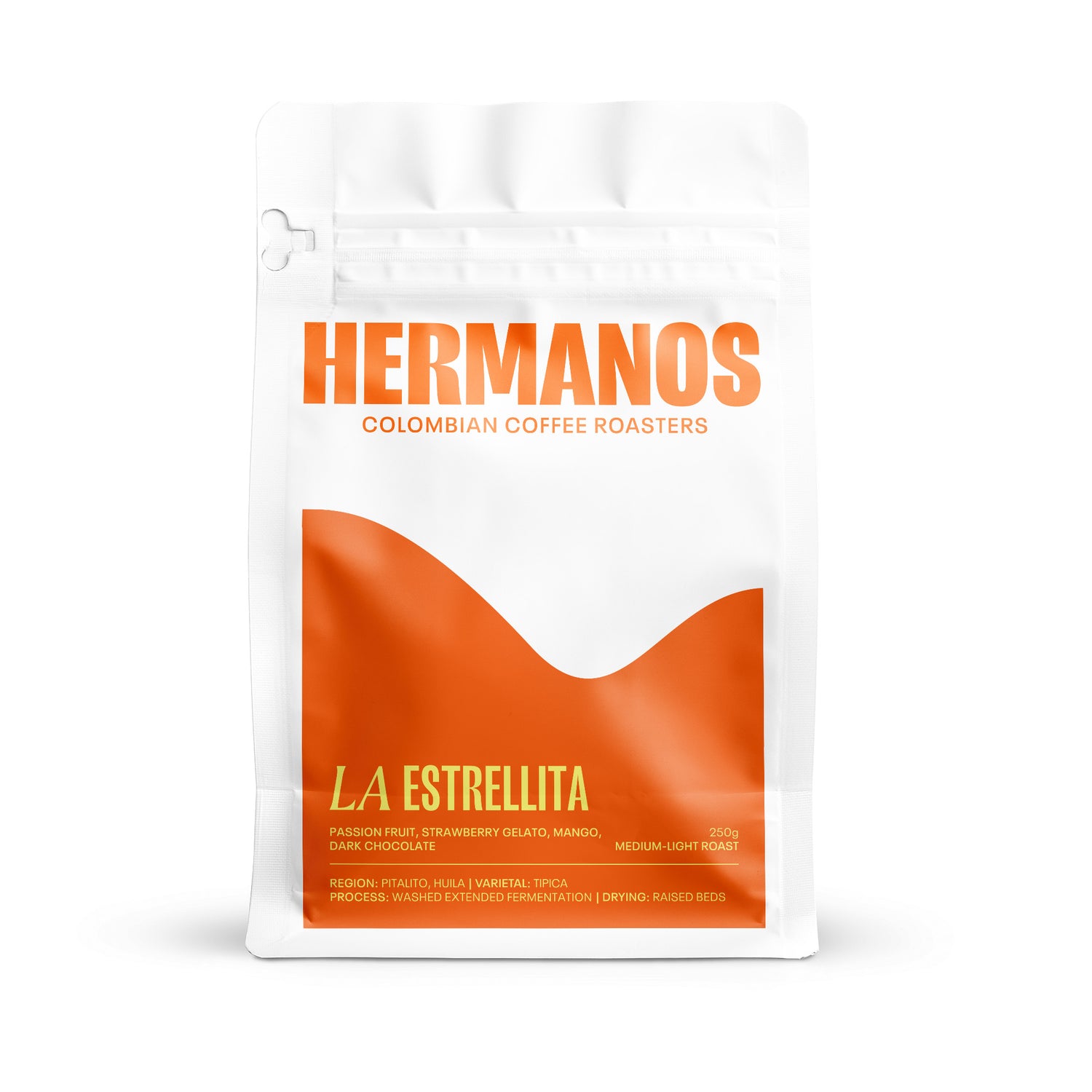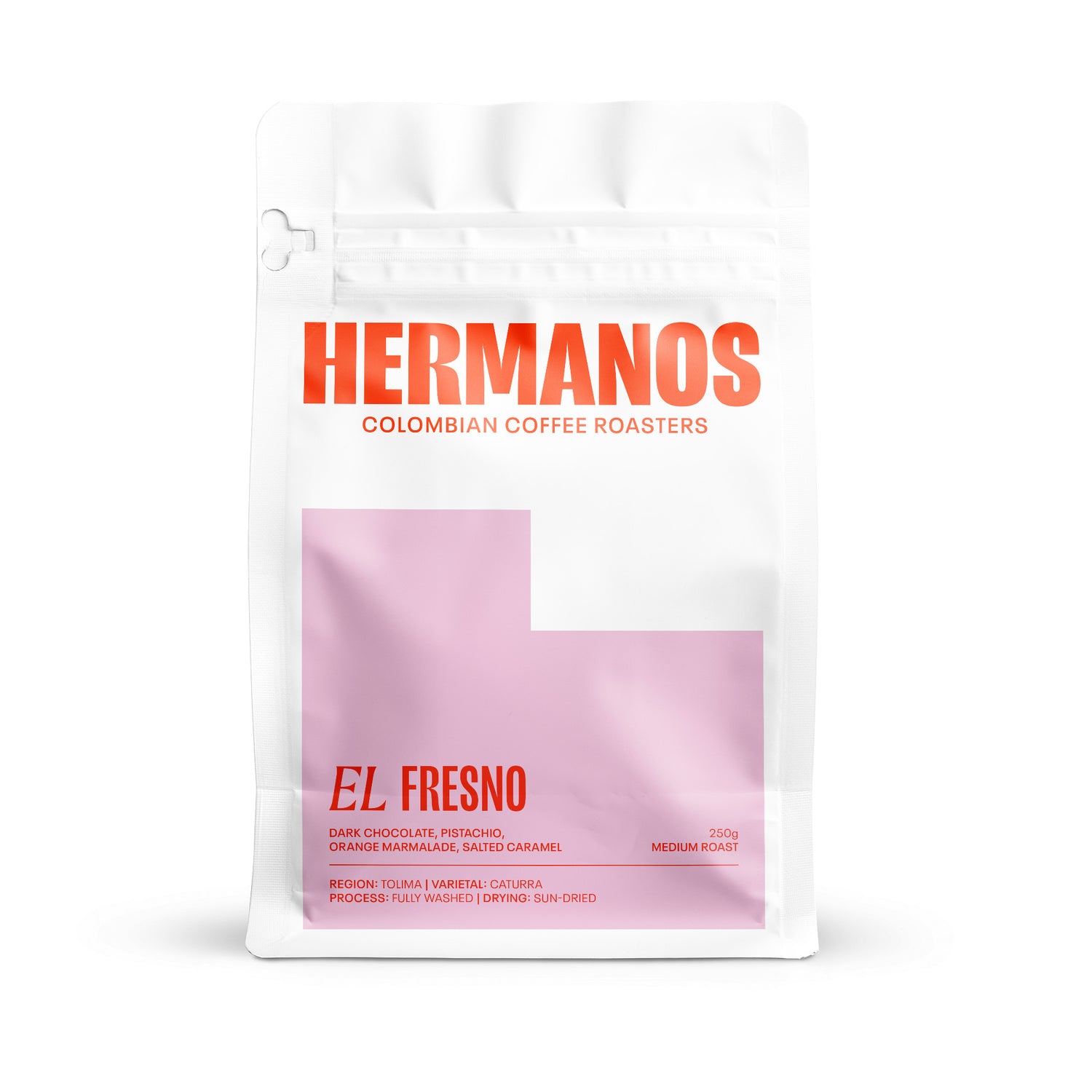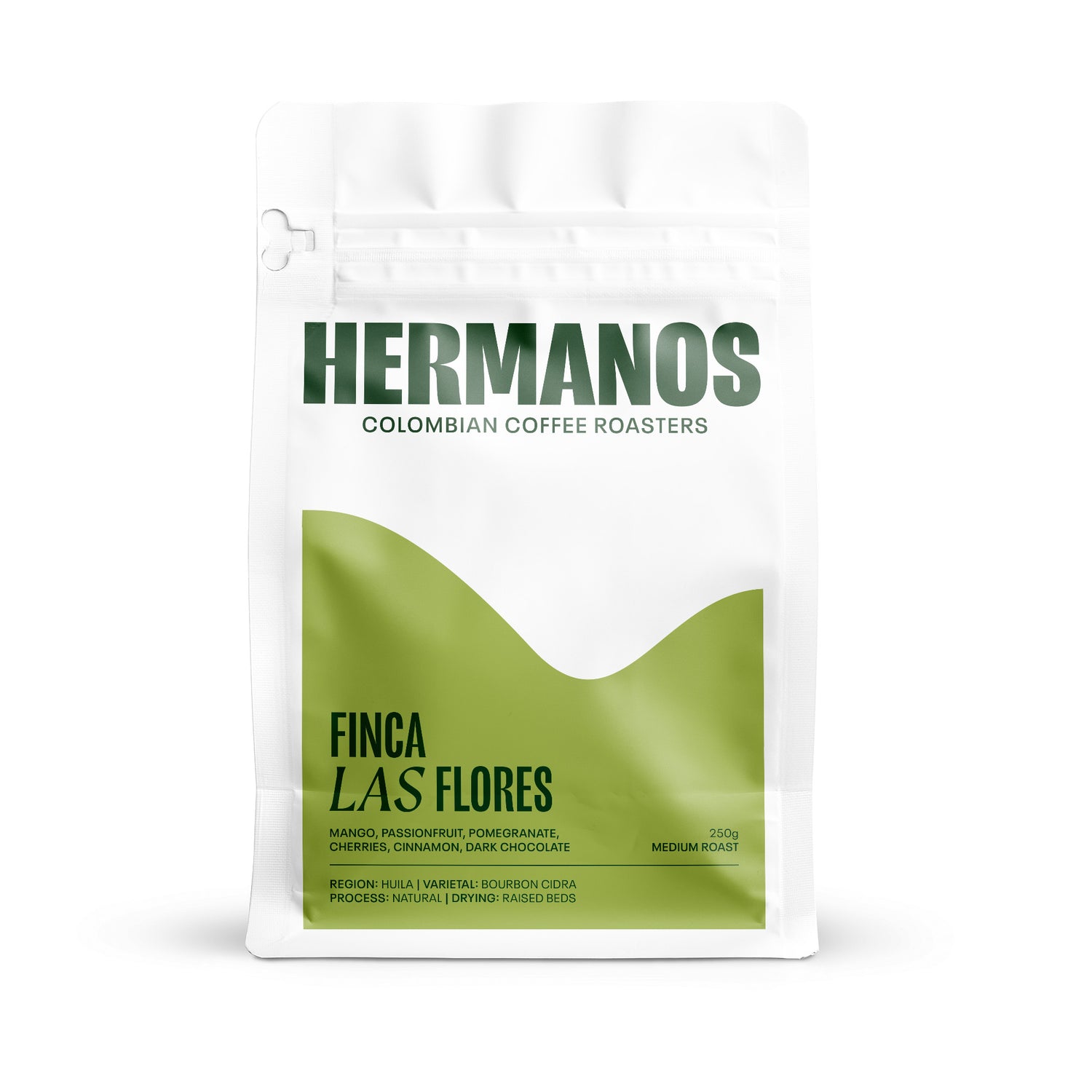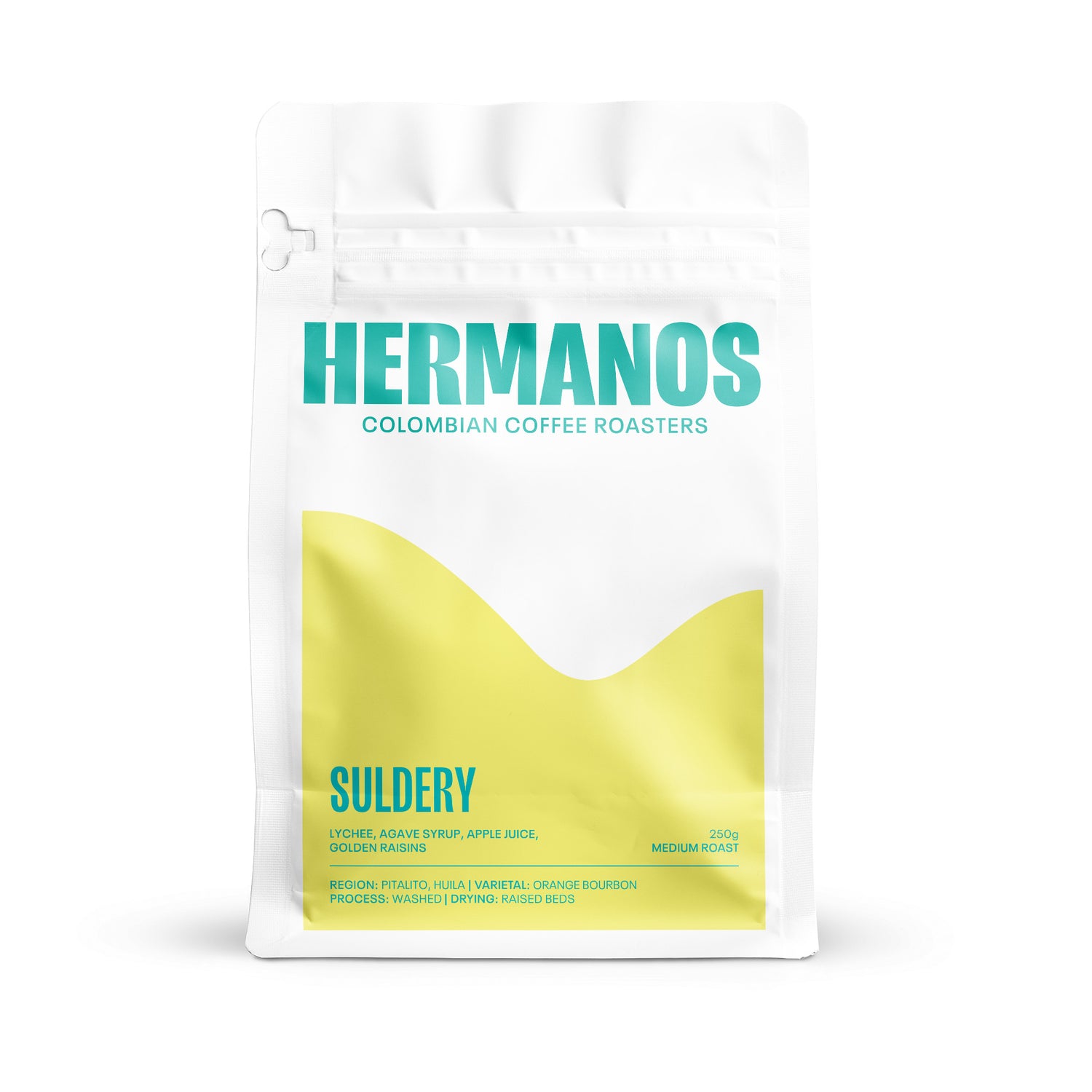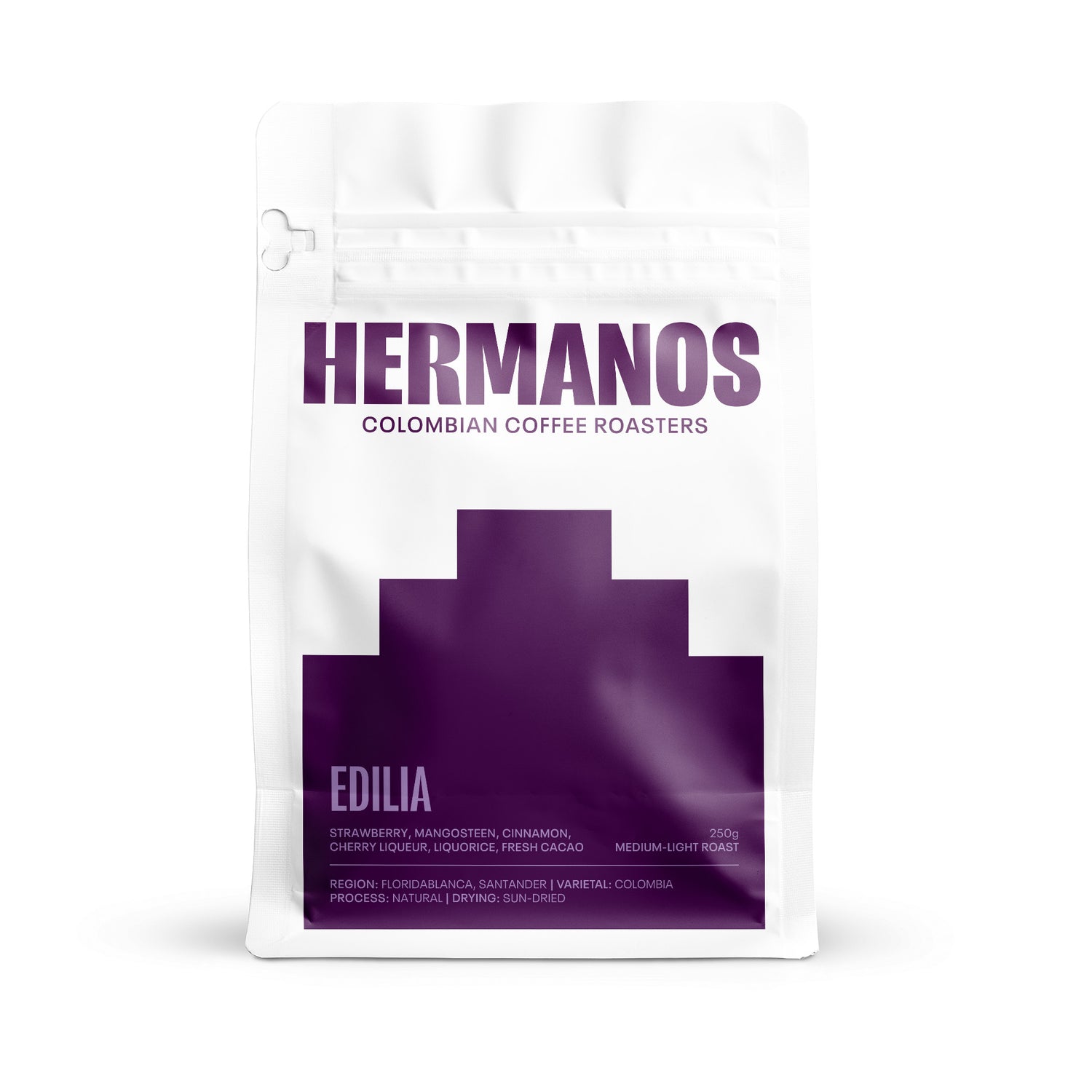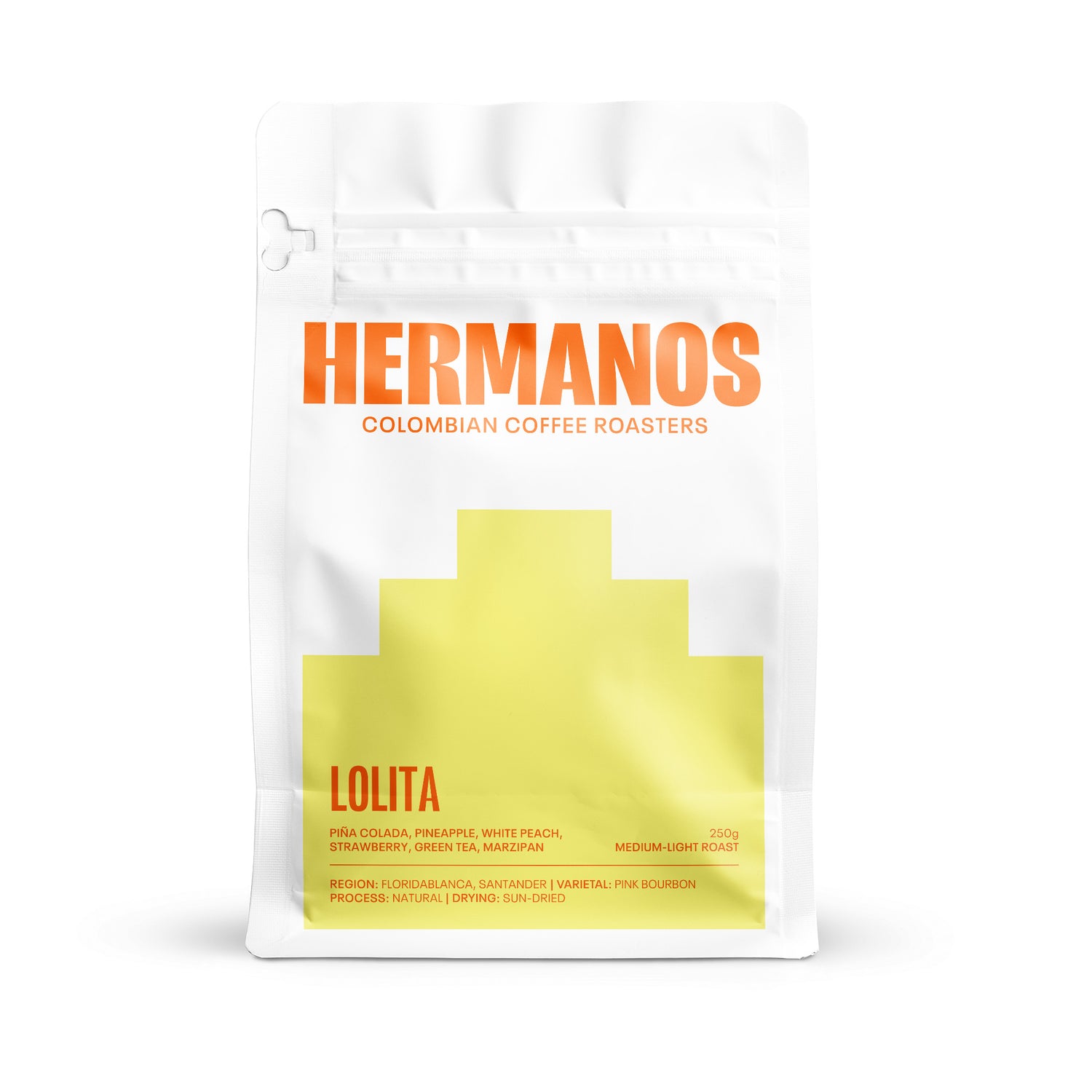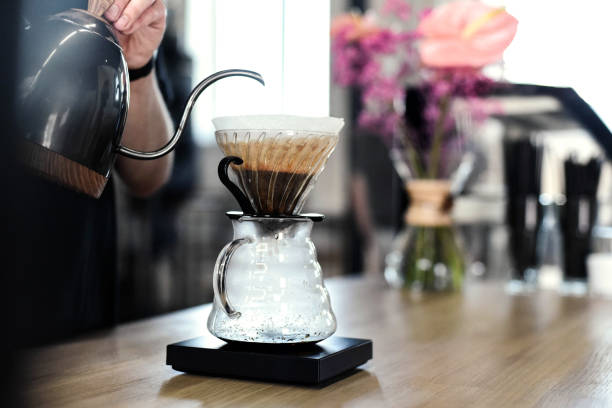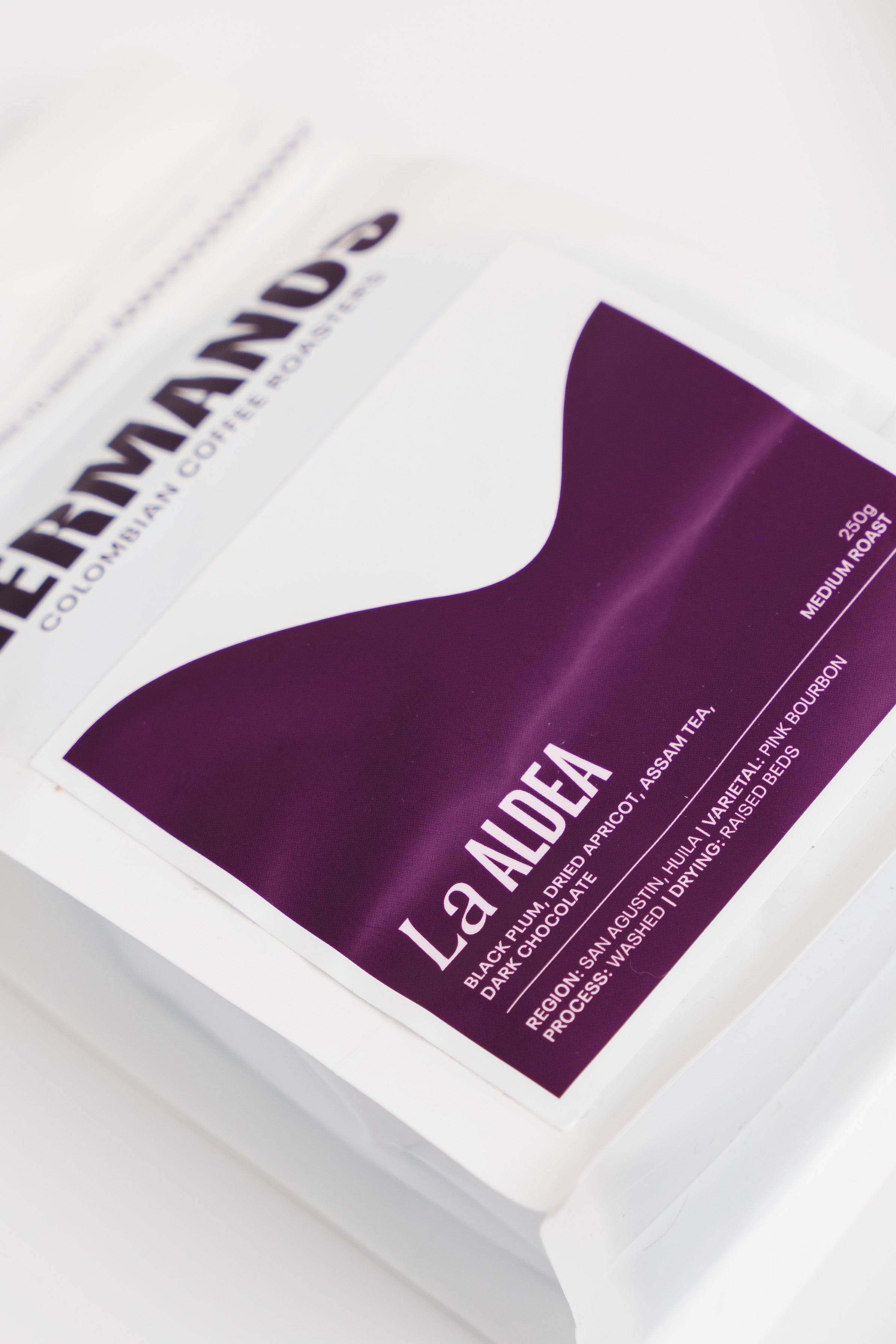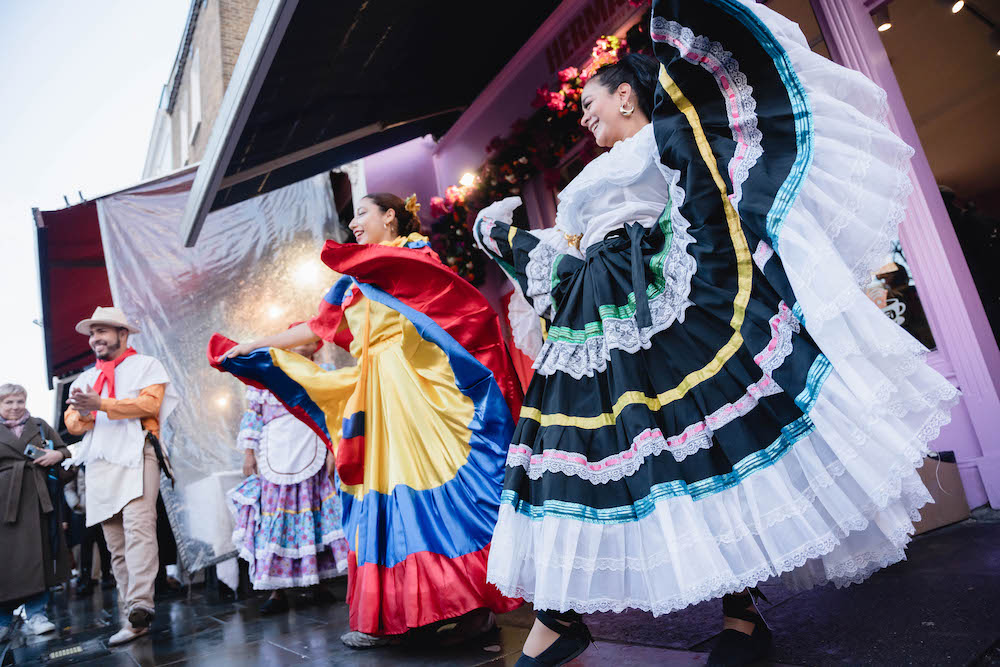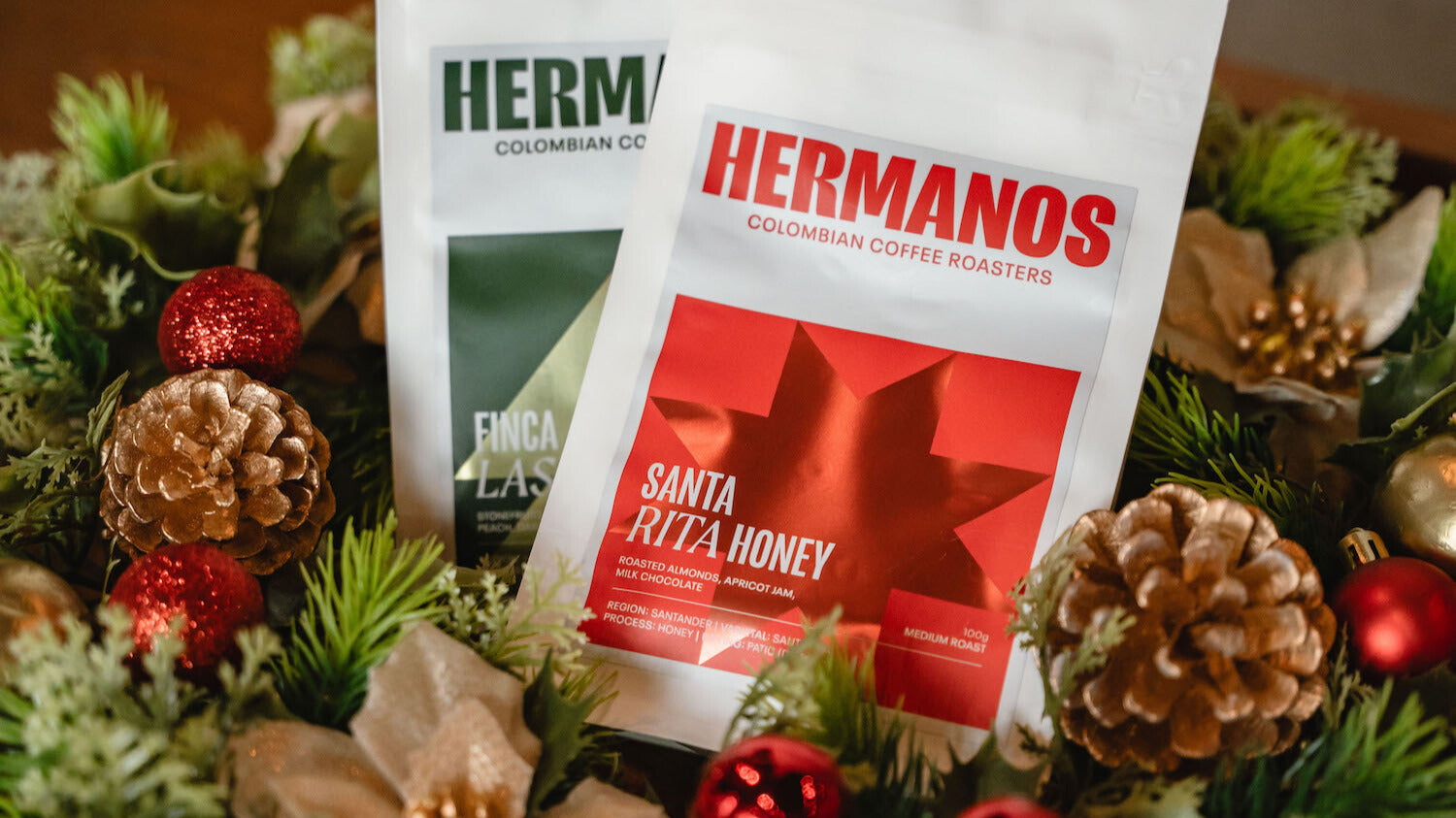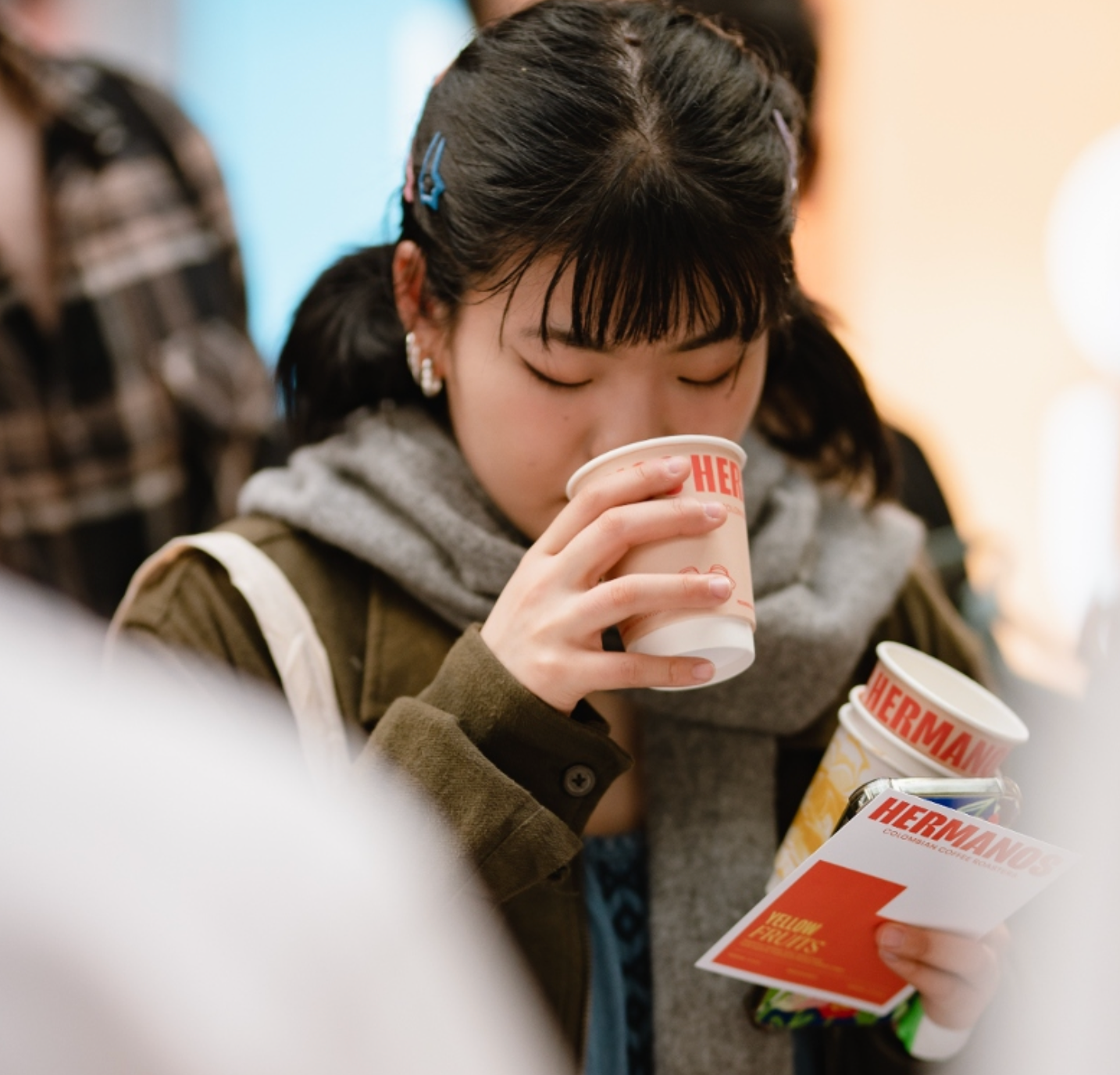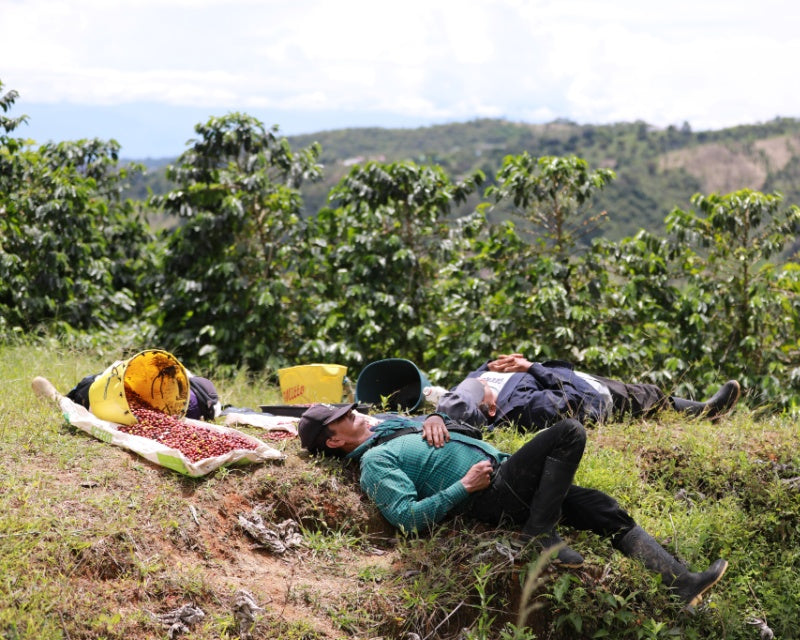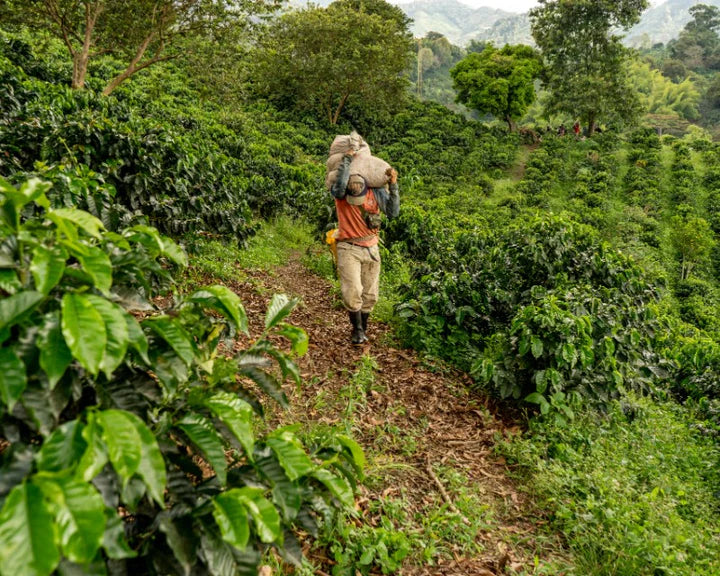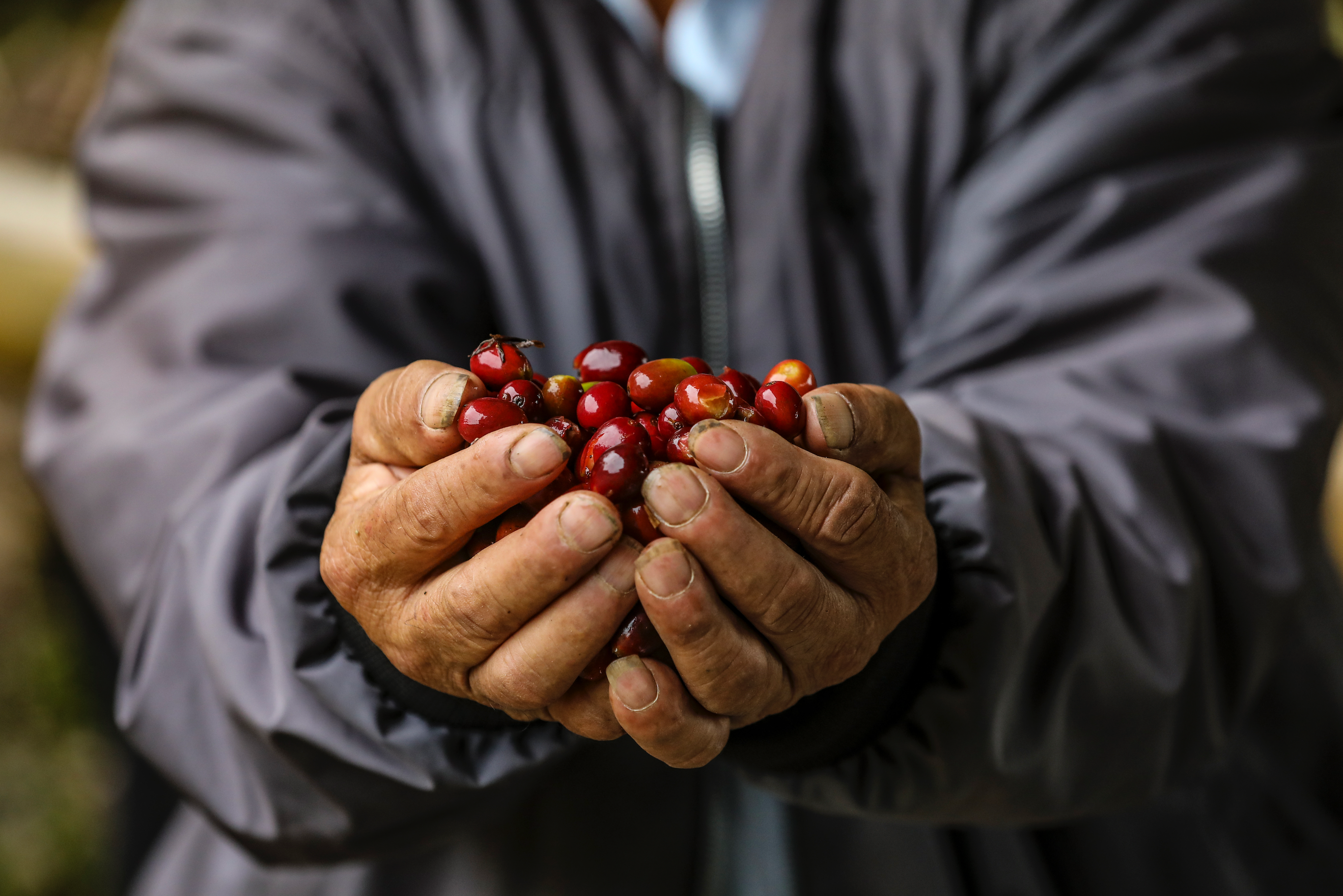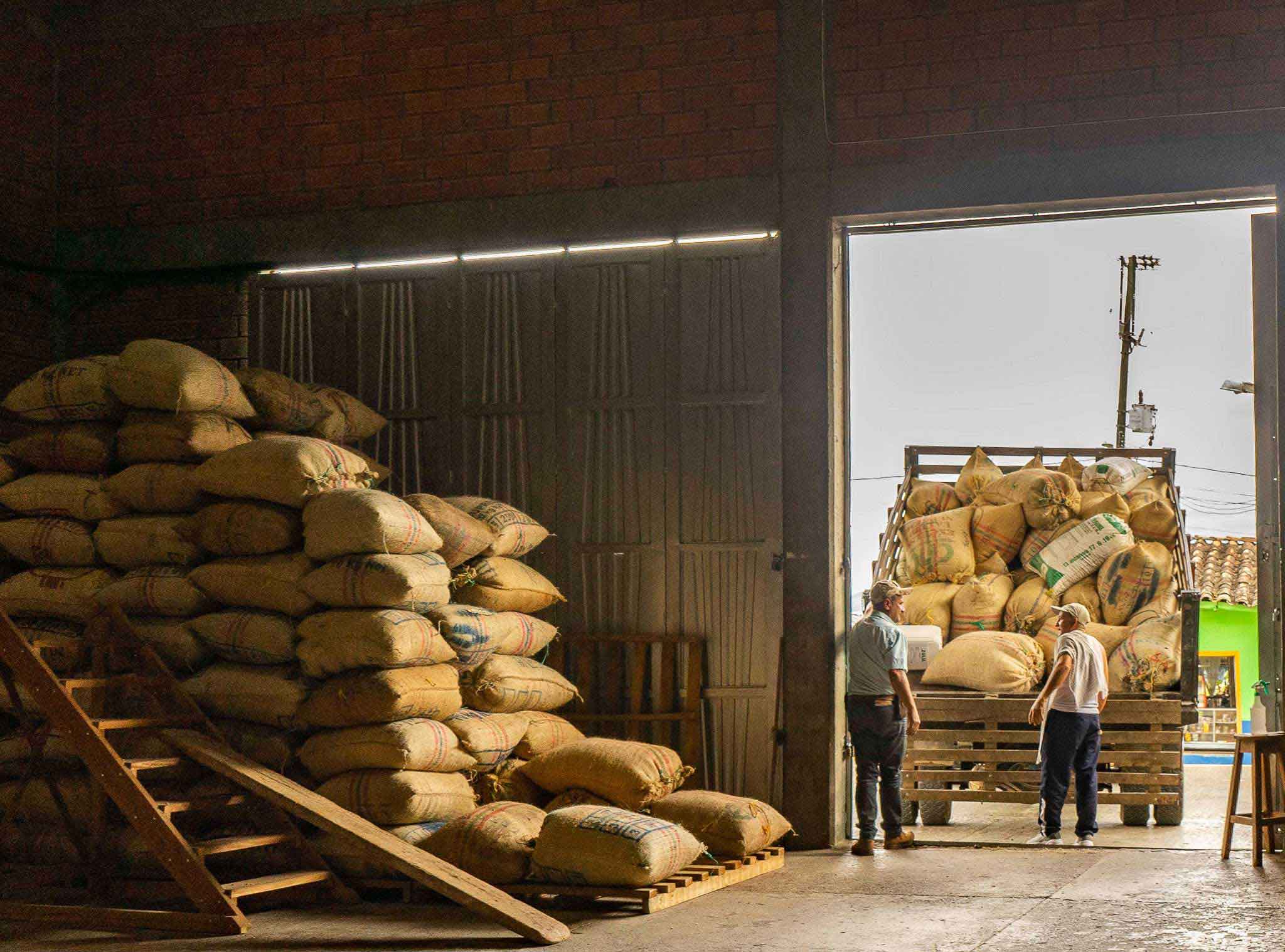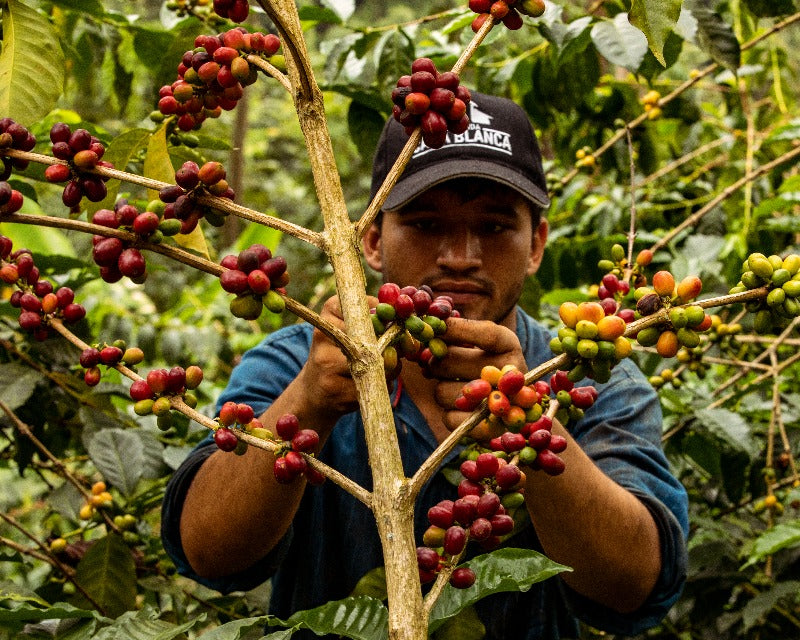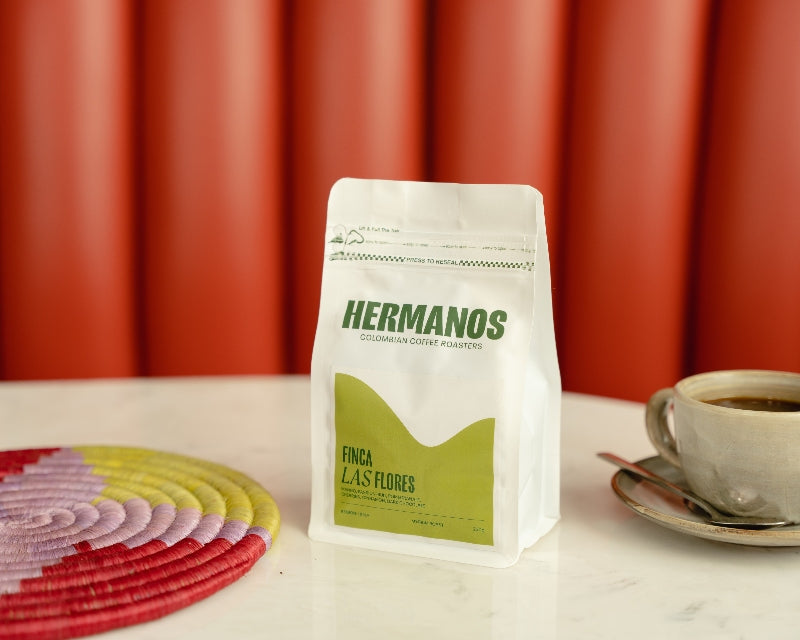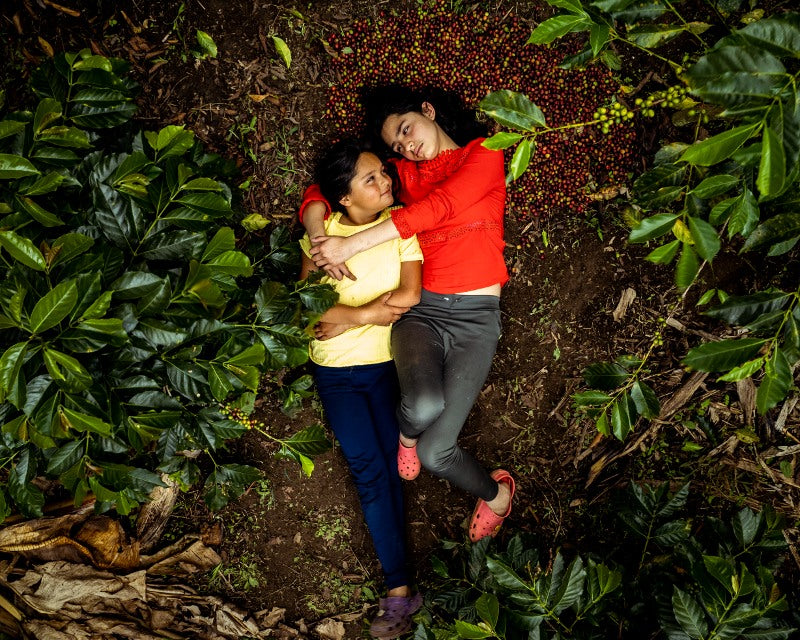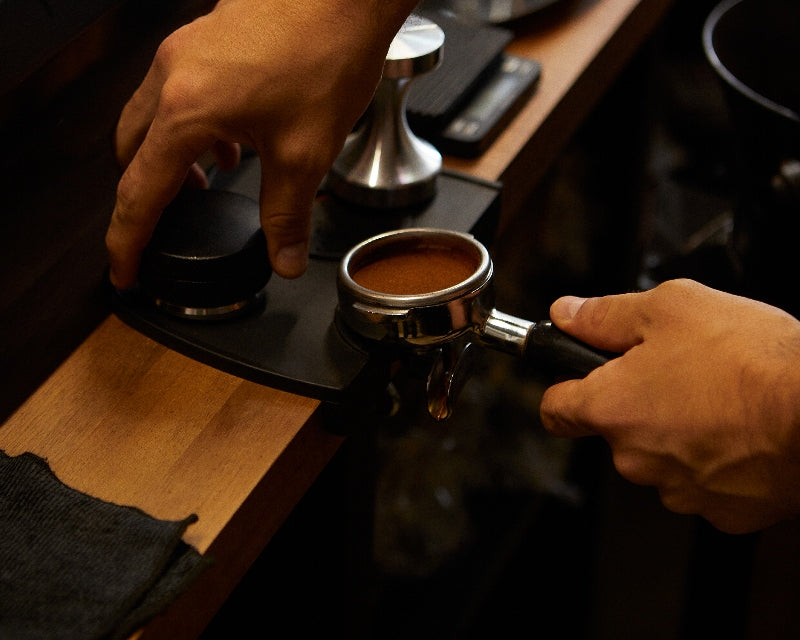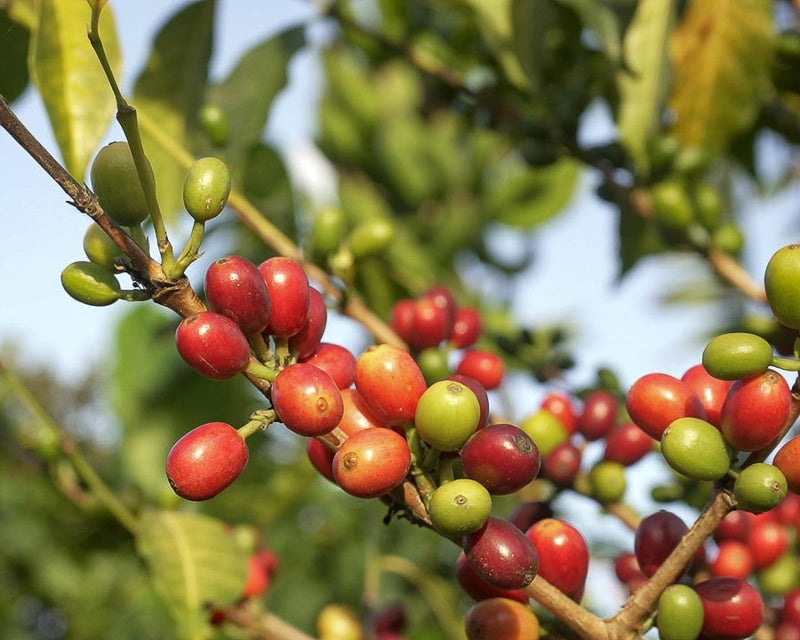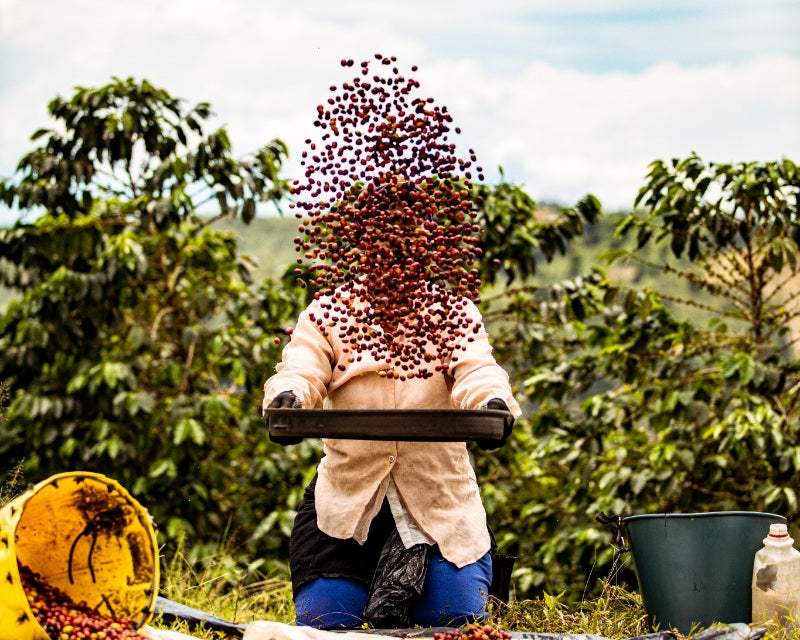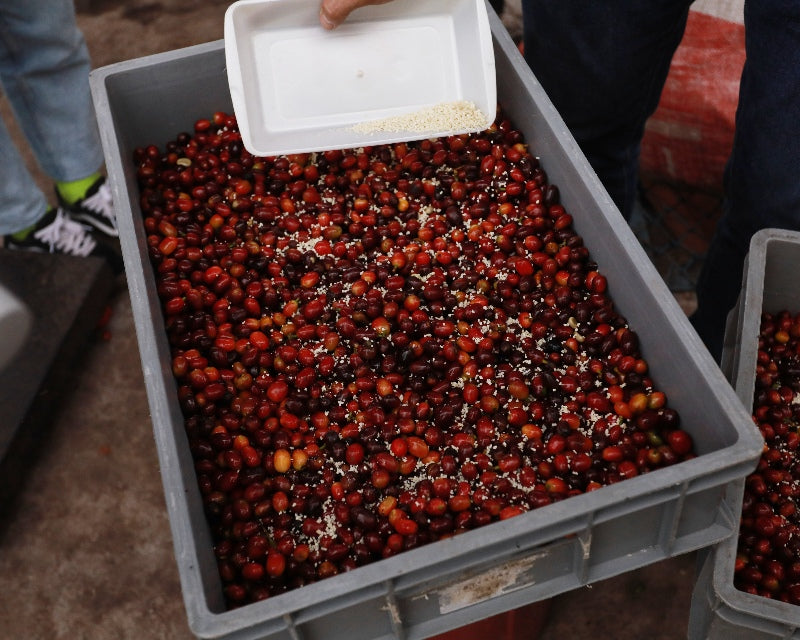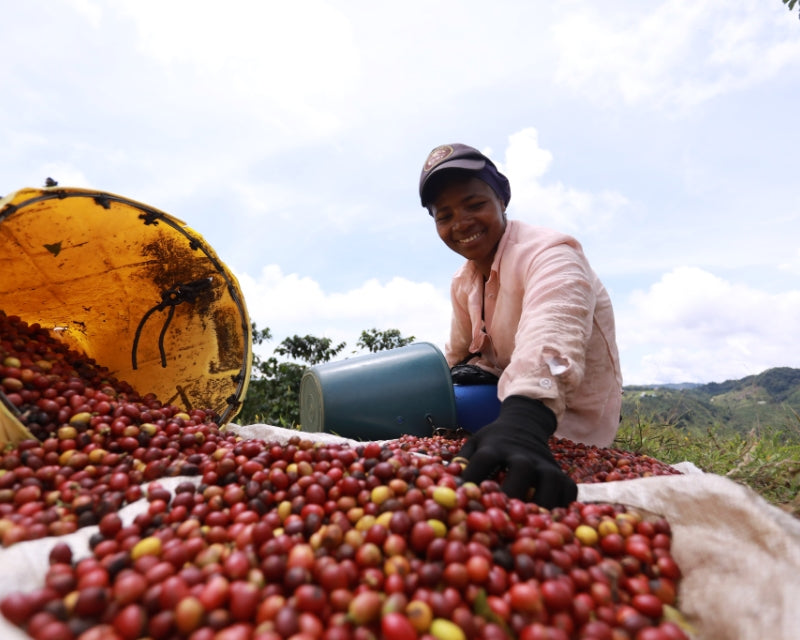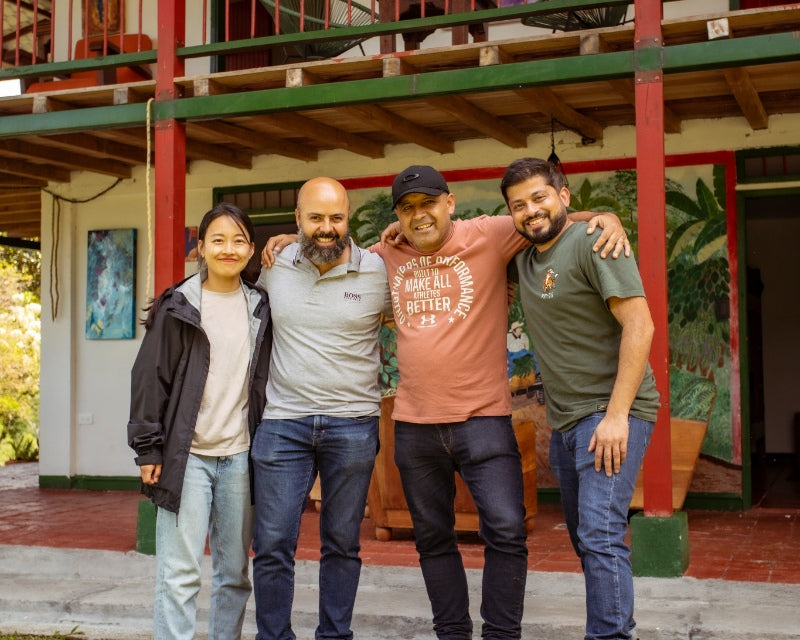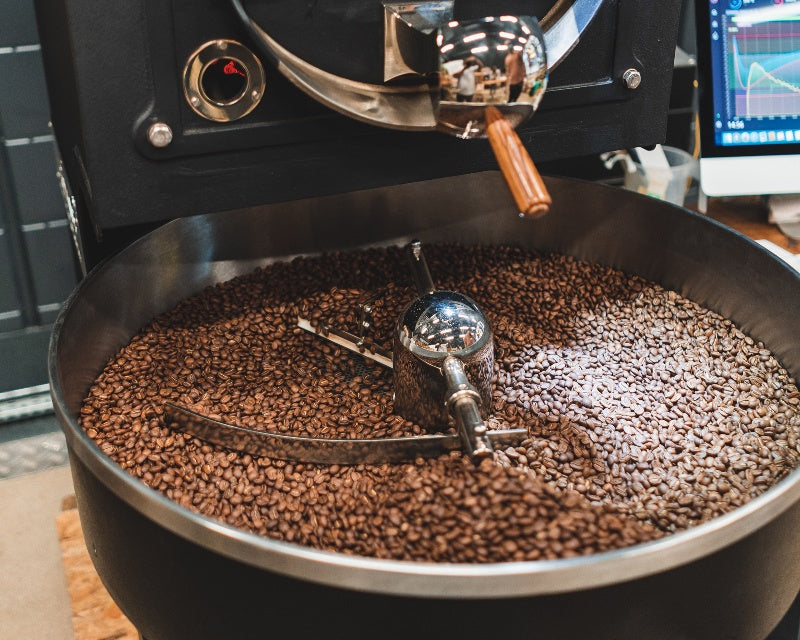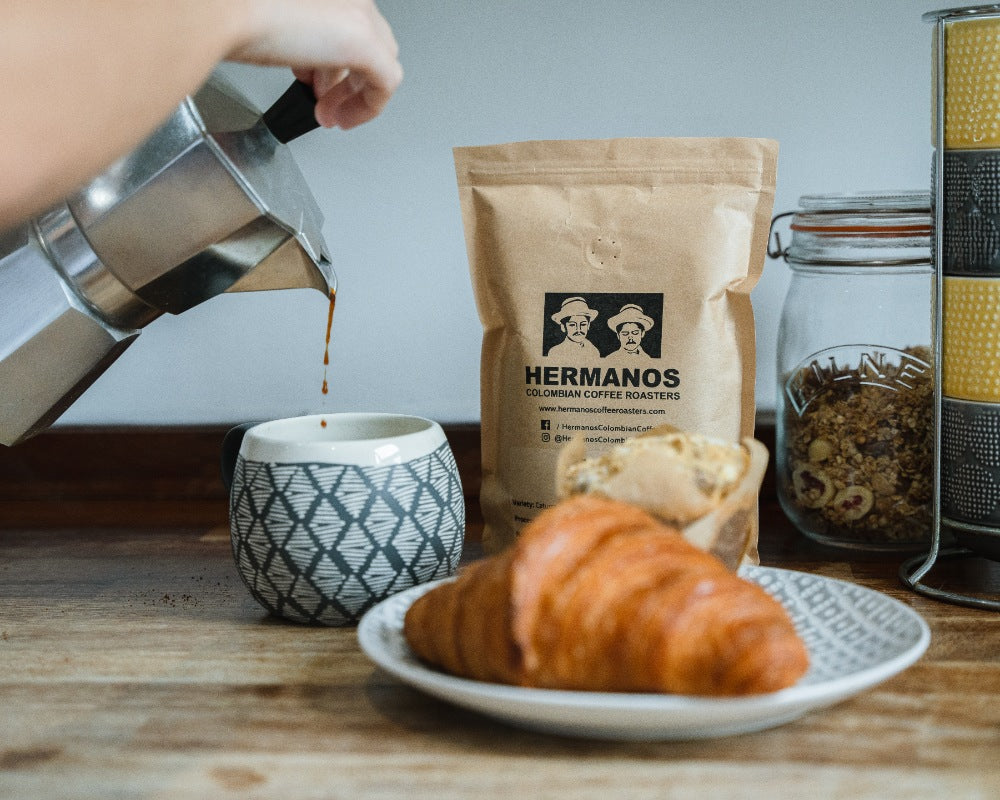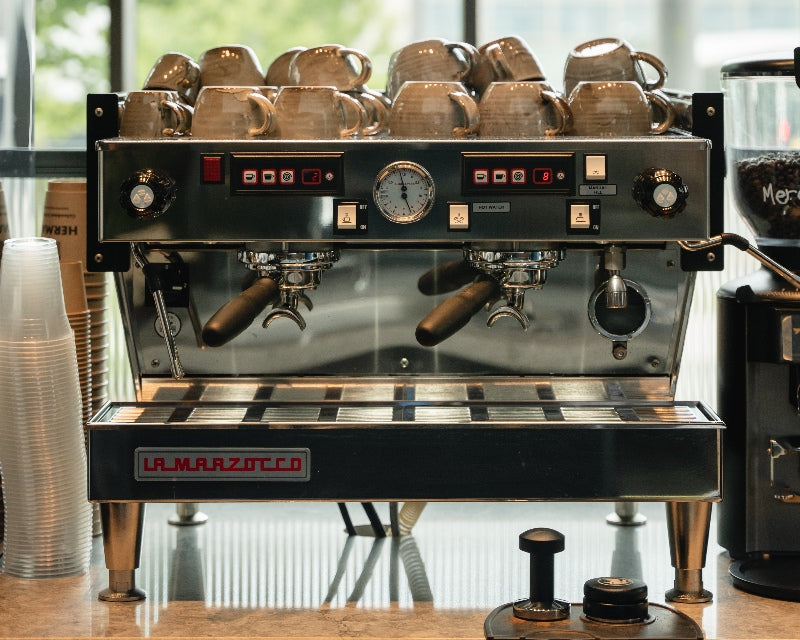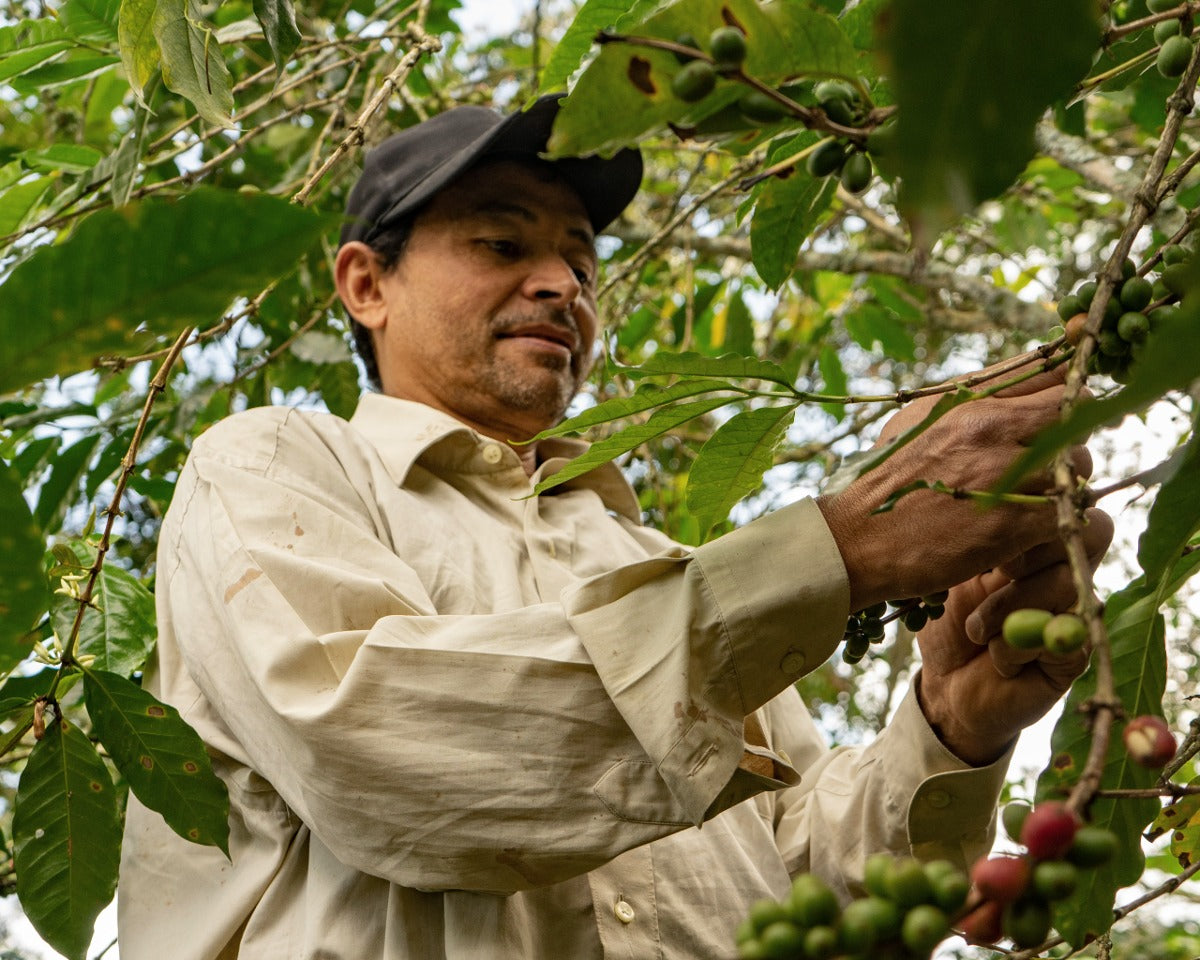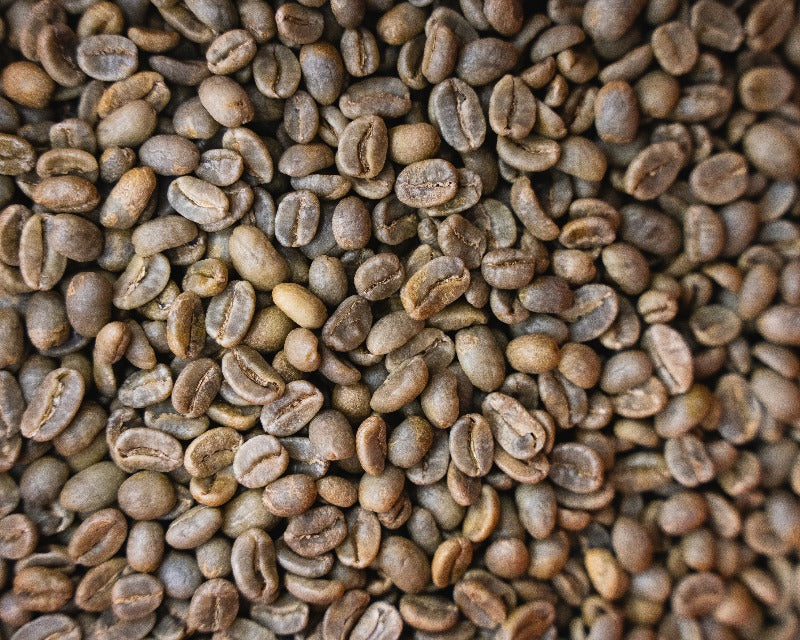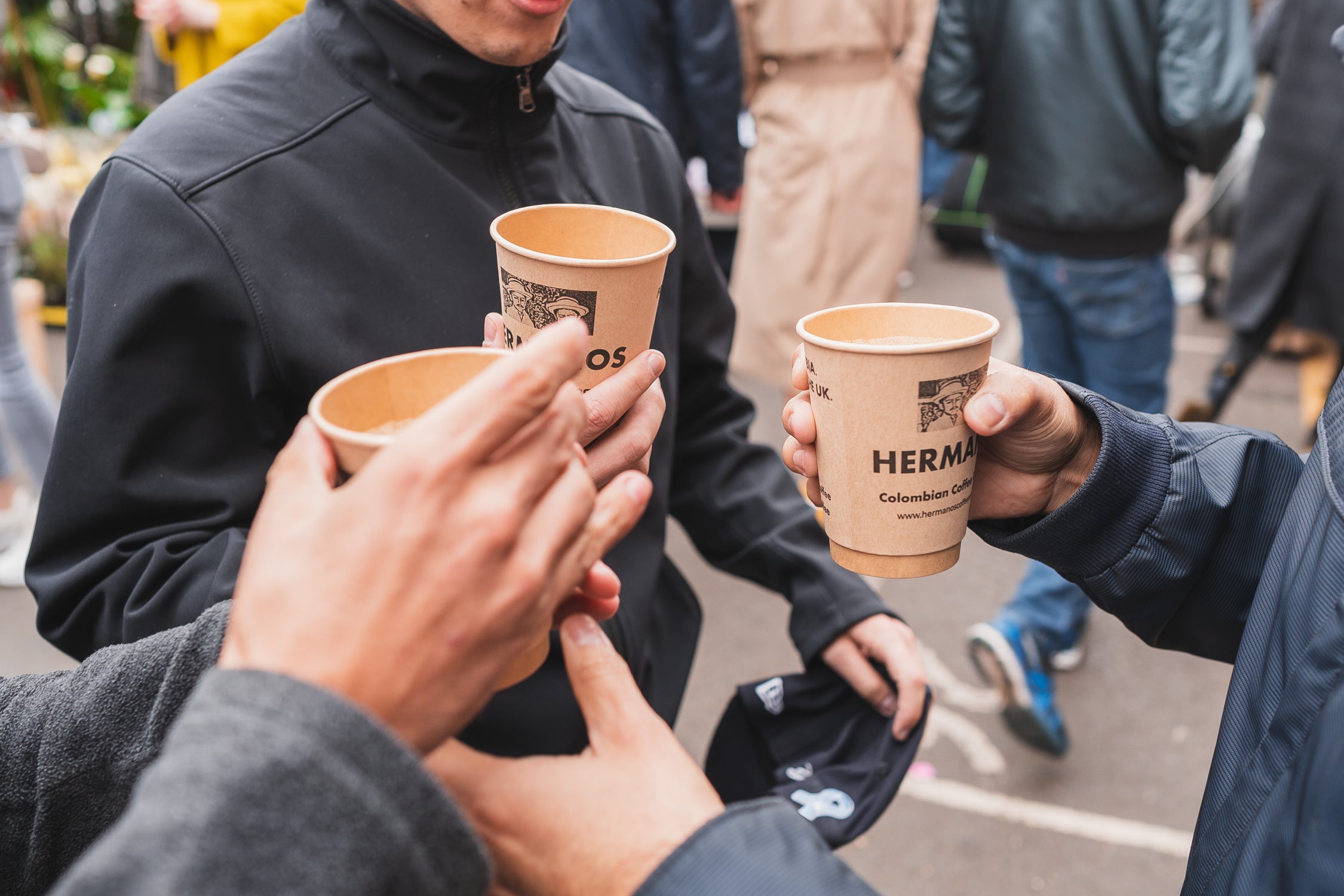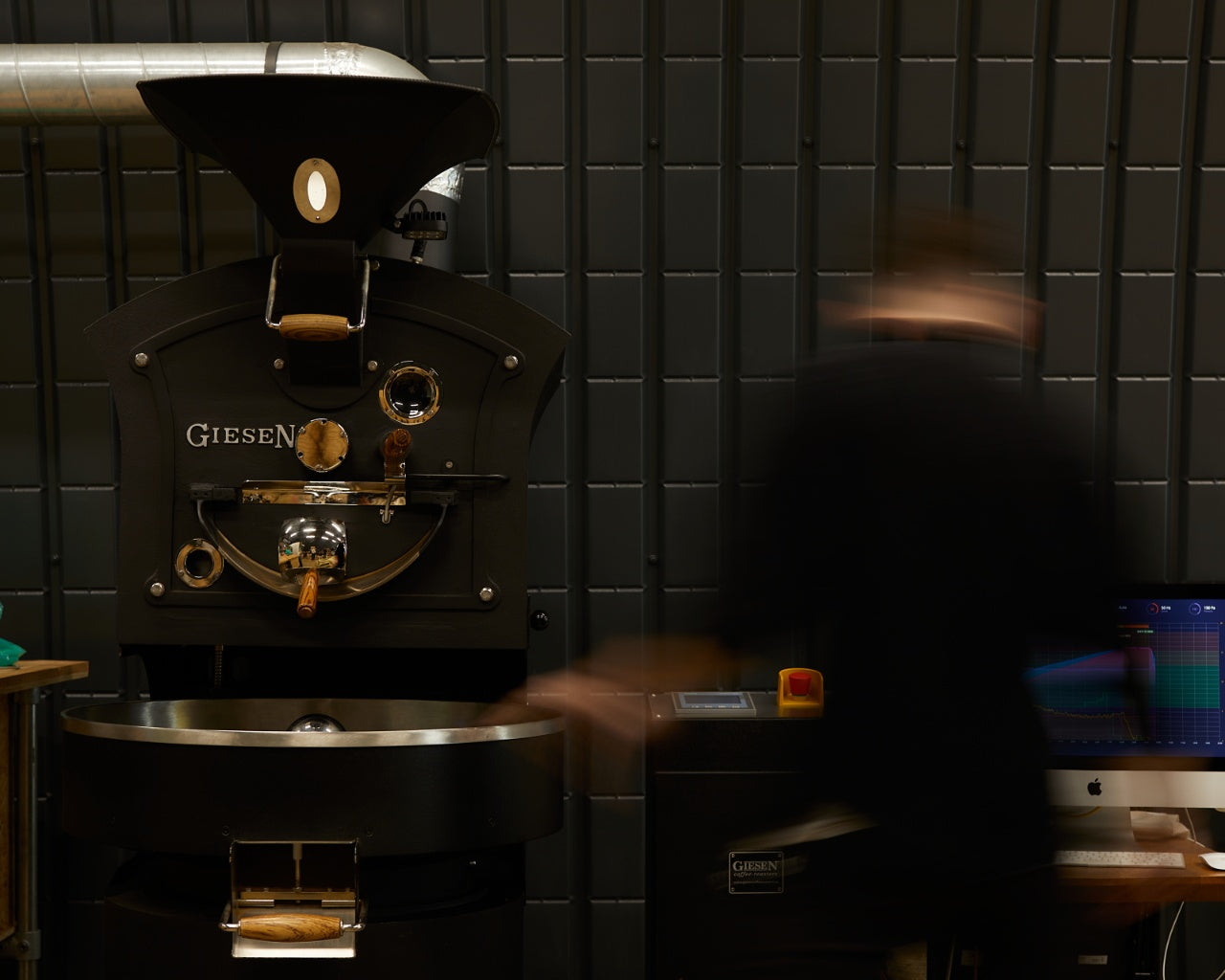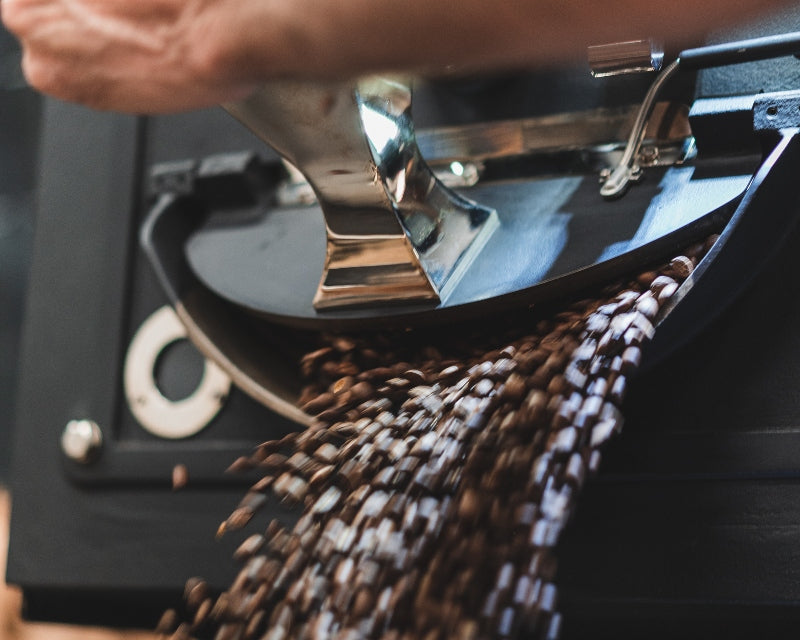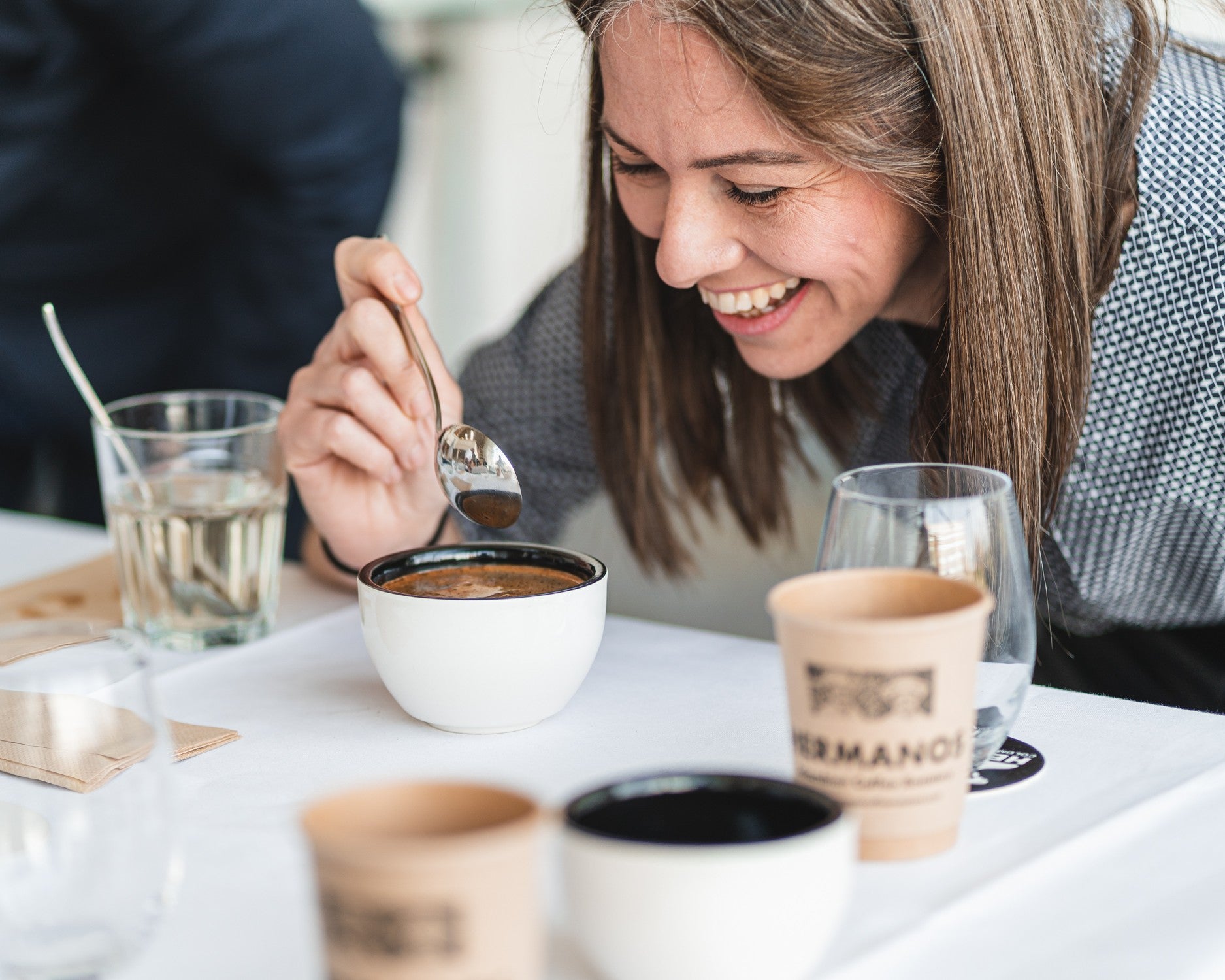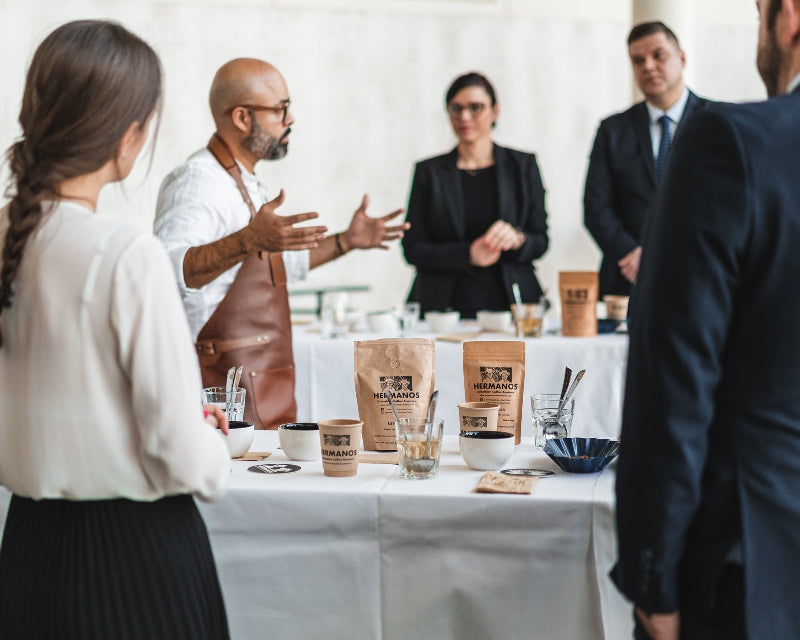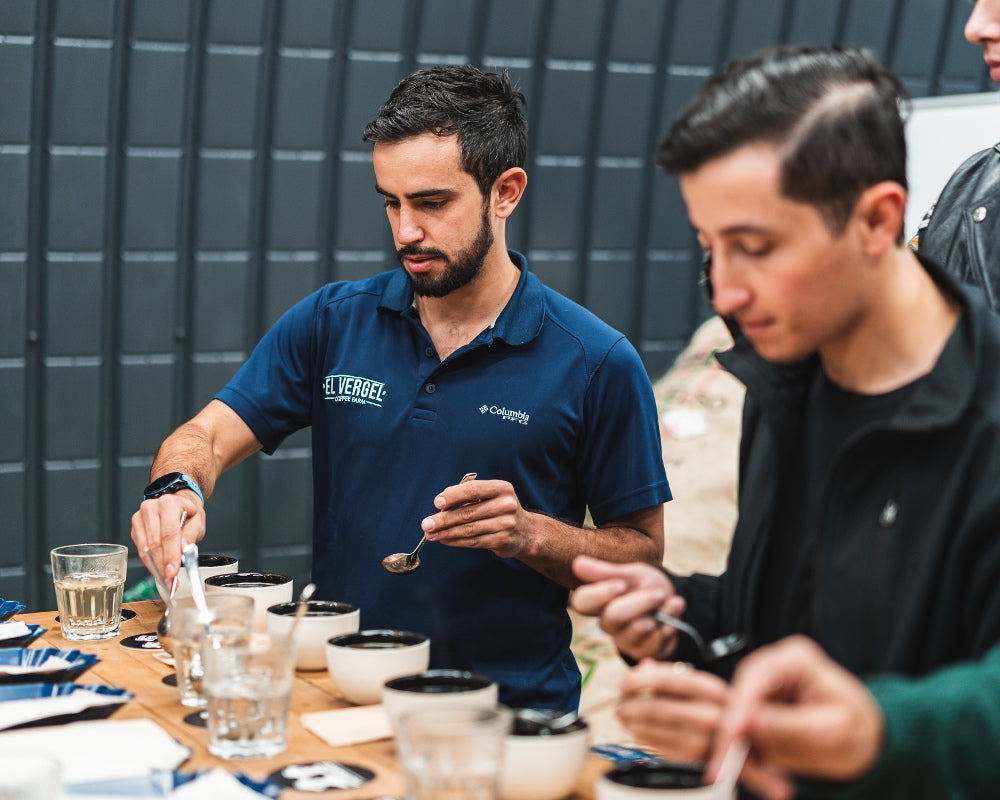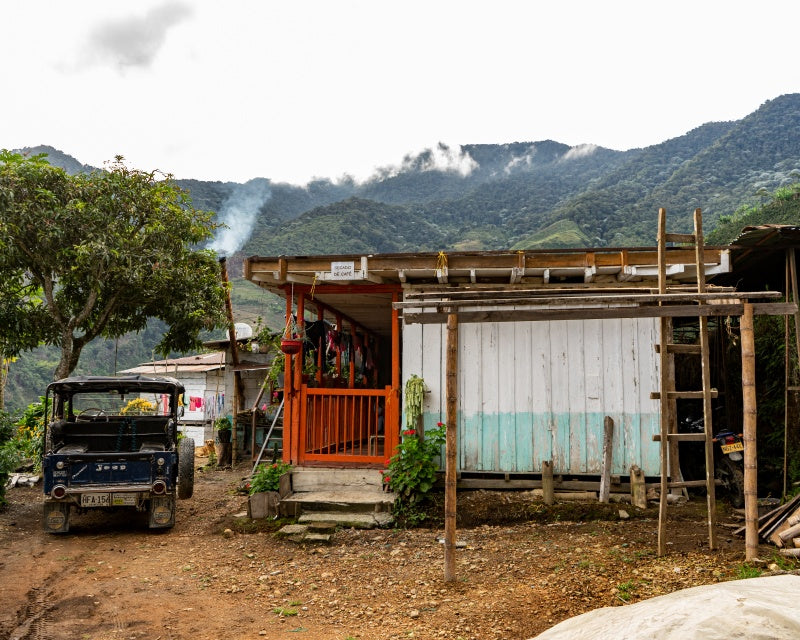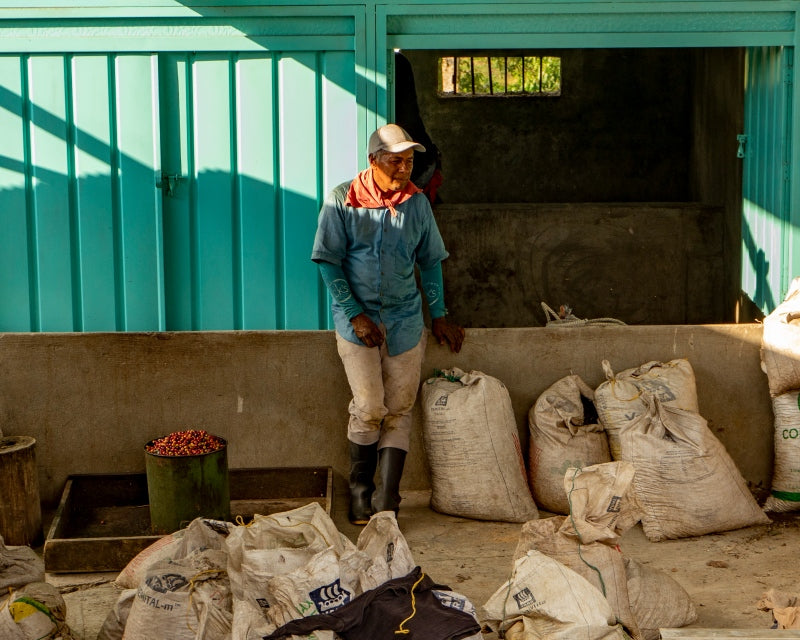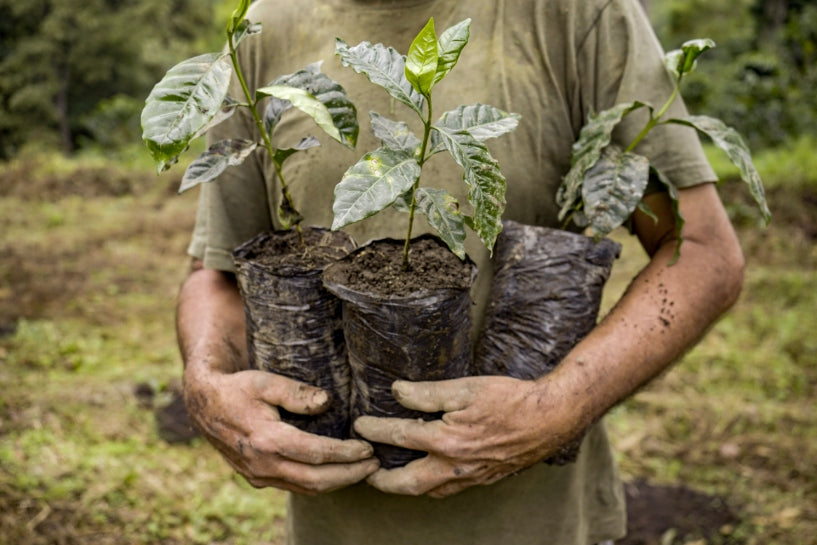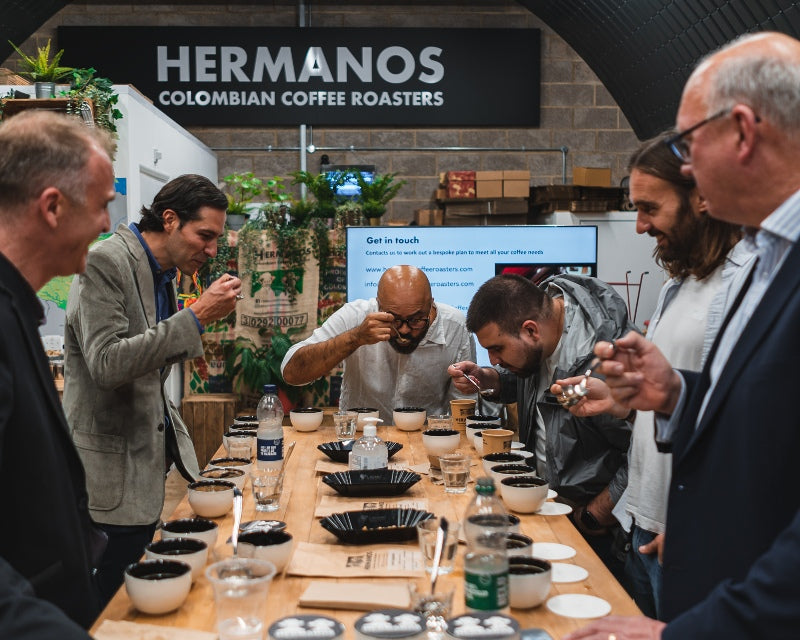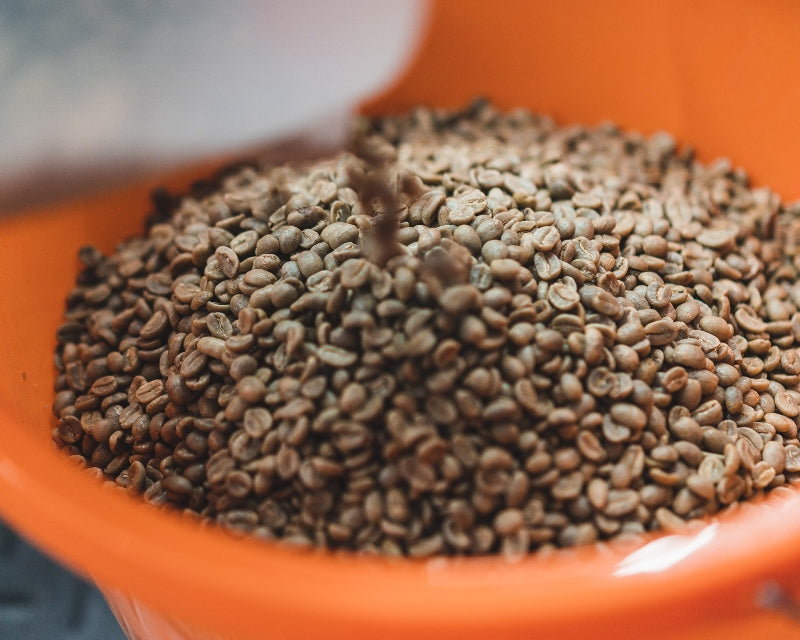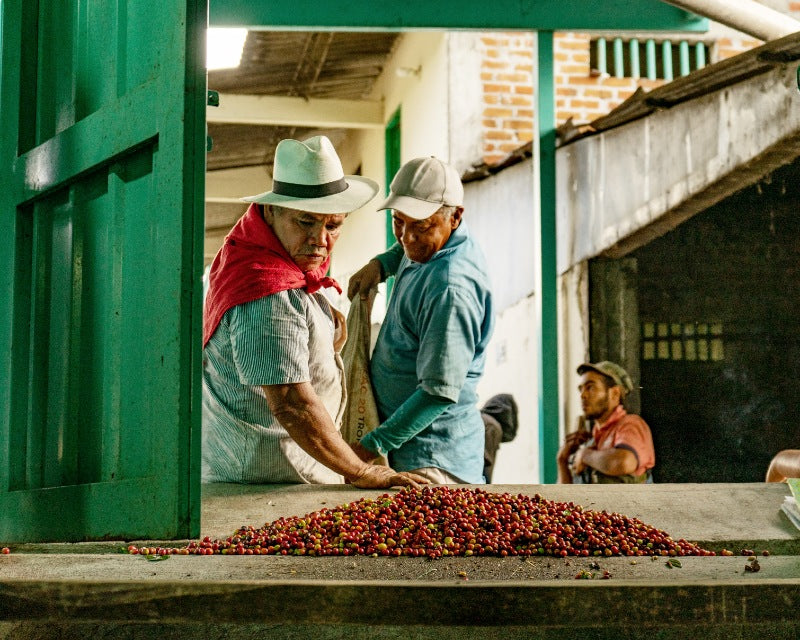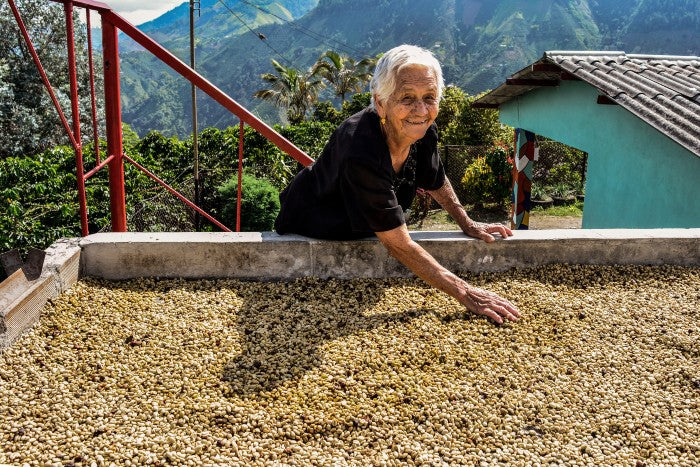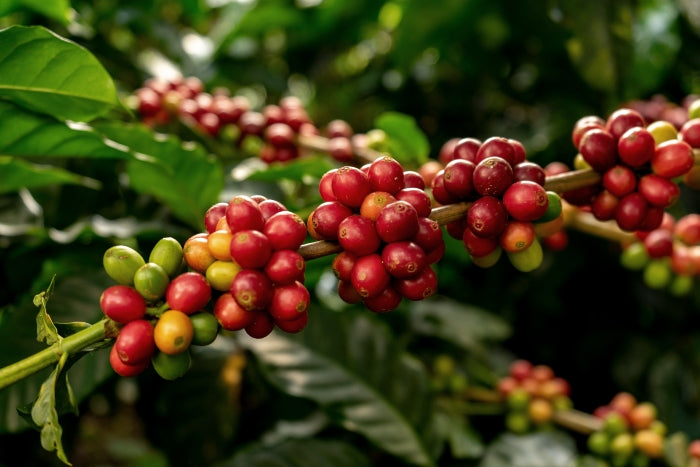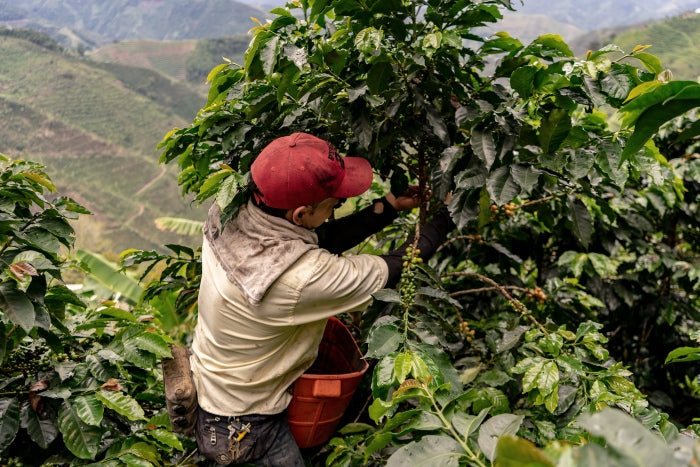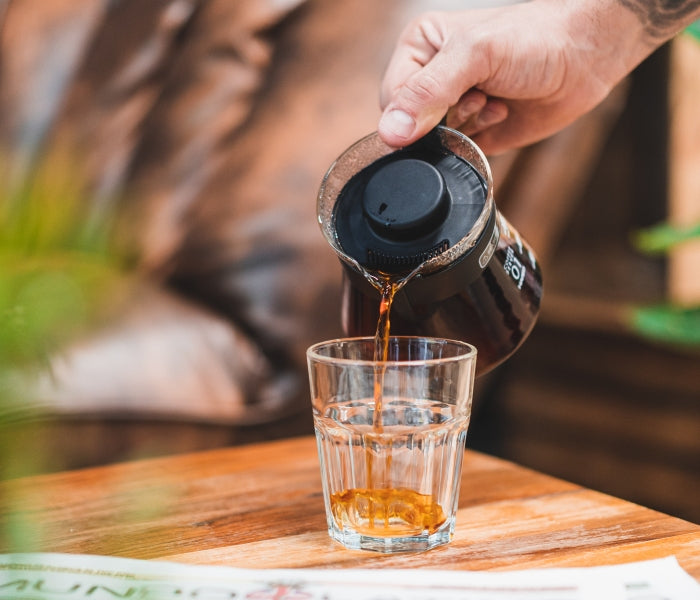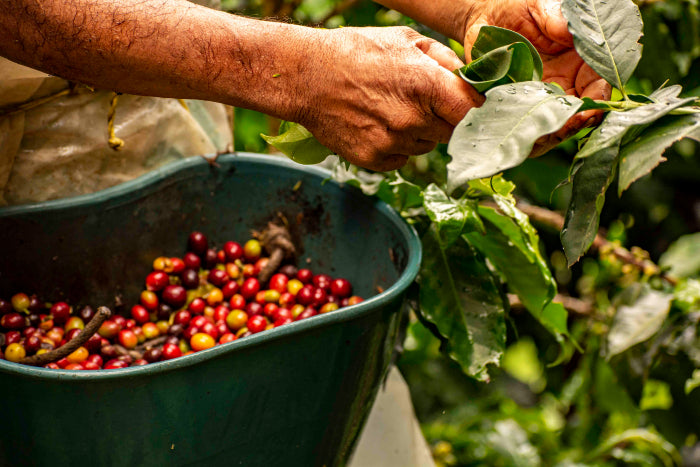Contents
-
Coffee Tasting vs. Coffee Cupping
-
Learning How To Taste
-
What To Expect During Your First Event
-
Coffee Tasting At Home - The Basics
-
Join Us For A Tasting Experience
If you love coffee, it may have crossed your mind to attend a coffee tasting event one day. But what does one involve? And can anyone turn up, regardless of experience level?
We explore what you need to know before your first tasting (or cupping) session, whether you’re joining Hermanos for one of our events, another specialty coffee roasters or creating your own tasting experience at home.
Coffee Tasting vs. Coffee Cupping
Anyone can taste and compare coffee (and we encourage them to do so), but when we talk about 'cupping' we're generally referring to a specific process used by the coffee industry.
In professional cupping, a strict protocol is followed and several factors such as aroma, sweetness, acidity, mouthfeel and finish will be given their own score, which is then summed up to produce a final score for the coffee.
This, among other things, is used as a point of reference for sellers and buyers of green coffee during price negotiations. It's also a way for a wide range of individuals in the coffee supply chain (producers, exporters, importers, roasters, coffee shops) to use a consistent method of testing a coffee's quality so that something close to an objective measurement can be reached.
The Cupping Process
-
Dry whole beans are prepared on trays to allow tasters to observe their qualities and fragrance while the brewing takes place
-
Hot water is poured onto small amounts of freshly roasted and ground beans in a cup or bowl using immersion alone to brew the coffee, rather than any specific brewing method
-
The aromas of the coffee are then analysed while it is allowed to steep for 3–5 minutes, allowing flavours to emerge and for the temperature to cool enough for drinking — a crust typically forms on the surface of the liquid
-
This crust is then broken and the floating grounds are agitated to unleash the coffee’s highly concentrated aroma, which is analysed again. Grounds then sink to the bottom of the cup stopping the brewing process
-
After this, any grounds or foam that has settled on the top of the coffee can be removed with spoons before the coffee is tasted in slurps (a method used to open the palate and get a better sense of the coffee’s qualities)
There's nothing stopping you from simply brewing different coffees at home and comparing them, but if you get a chance to go cupping, it’s a great opportunity to see exactly how professionals across the globe evaluate coffee.
The distinctive slurping method sprays the coffee across your entire palate and lets subtle flavours and aromas reach your nose.
Learning How to Taste

Whether you’re coffee cupping with an experienced team or just comparing between different coffees at home, finding a way to frame your thoughts and opinions can be the hardest challenge.
Familiarity with some of the basic concepts and vocabulary of coffee really helps to add structure to any tasting experience.
There's a full flavour chart you can study if you feel like it, but we recommend simply starting with the fundamentals below.
|
Sweetness
|
We all know what sweetness tastes like, so this is often the first thing we recommend thinking about. For instance, how much do you detect a sugary sweet quality? And, what kind of sweetness does it remind you of? Is it something like brown sugar or is it more like honey?
|
|
Body
|
Different coffees will feel more or less heavy on your tongue. And the consistency of liquids can play a role in how much you enjoy drinking them. Common points of reference could be full-fat milk vs. skimmed or non-dairy milk alternatives. Or, how a light lager differs from the heaviness of a stout beer.
|
|
Acidity
|
Acidity is a distinctive flavour that you can pick up fairly easily if you know what you’re looking for. A coffee’s acidity may appear fruity or citrussy, and you might be tempted to compare it to something like lemon or a type of berry. A high acidity can be described as bright, sharp, vibrant or lively. And low acidity could be described as smooth, moderate or even dull. Remember that acidity can be both positive and negative and while many of the most sought after coffees have a complex acidity, even small amounts of acidity are unpalatable for some people’s taste buds.
|
|
Flavour
|
Coffee flavours, or notes, can be compared to countless foods and ingredients. In this sense, there’s no wrong answer when you're trying to describe what you’re tasting. The more you taste coffee the easier it will be to draw meaningful comparisons.
|
|
Finish
|
What happens after you’ve finished your first sip or slurp? Some coffees feel more potent than others and leave a lingering effect on the tongue. The flavour and effect of other coffees will seem to disappear more quickly. You might be left with a certain aftertaste too, such as sweetness or bitterness.
|
Tip: When thinking about the above, consider writing down your thoughts. The goal is to notice specific traits about the different beans and find ways to compare the cups in front of you.
If you’re struggling to describe what you can taste, try tasting ingredients that your coffee is known to taste like, such as berries, chocolate or caramel before your next tasting to make referencing them easier.
What to Expect During Your First Event

At a cupping session, there will typically be a variety of bean samples laid out for you on a table, as well as the equipment needed to brew and taste the coffee. There might be several coffees from the same origin country (such as Colombia, if you're tasting with us), or coffees produced in many different countries.
The more diverse the coffees are the easier it will be to compare them as a beginner taster. However, you'll still find a good amount of variation within one country of origin, so you don’t necessarily need to be comparing African coffees with South American ones.
The roastery, cafe, or individual running the event will generally have everything prepared before you arrive, including the cups, spoons, and of course, the coffee.
Some experiences will be more lively than others (perhaps with large groups of friends attending) and some will be more calm and contemplative. It really depends on the environment, the people attending and the attitude of the hosts.
Our experience with tastings is that people are generally respectful of the whole process and it helps to go into these activities with an awareness of how much people really care about coffee, whether it’s the social impact aspect of it or the appreciation of coffee as an artisanal product.
Everyone has their own reason for enjoying coffee and all of them are valid!
Learn What Makes Colombian Coffee So Special
What Does the Tasting/Cupping Set-Up Look Like?

There might be some variation depending on the venue you’re visiting or the kind of equipment that’s currently on-hand, but the image above is a good general representation of what you’ll find at your tasting table.
The types of cups or spoons may vary, or the tray holding your beans, but as long as the approach is consistent, this doesn’t really matter.
Do I Need to Slurp?
You don’t need to slurp as aggressively as your host is doing, but slurping helps to increase your flavour and aroma perception — making it easier to form an impression of the coffee. It’s really very normal and once you get started you won’t look back.
Is there Any Cupping Etiquette I Need to Know About?
Before and after dipping your spoon into a sample, it’s generally good practice to rinse it. This helps keep things hygienic as well as prevent cross-contamination of the different coffees you’re tasting.
Sipping water between coffees is also a good way to cleanse your palate, so if you see several glasses or bottles on your table, this is what that’s for.
Do I Need to Share My Thoughts?
If you’re shy or haven't formulated a way to describe what you’ve experienced, you don’t need to stand in front of the class and explain what you’ve tasted.
Simply being mindful of what you’re experiencing is the most important part. Some hosts will also encourage silence until the process is over anyway, so that other people's opinions don’t influence your own.
Having said that, joining a lively discussion about coffee is a great way to learn. And the social aspect of a tasting experience is why many people come back for another event.
Do I Need to Know Tasting Vocabulary?
Some people feel daunted by the potentially confusing methodology and vocabulary that goes along with cupping, which may put them off from joining an event. This is a shame as public tasting sessions should be open to everyone, at all levels.
If you’re prepared with a basic understanding of sweetness, body, acidity, flavour, and finish, this is more than enough to come to one of our tasting sessions. And even if you know nothing at all, we’ll explain everything on the day.
Even if you know nothing at all, we’ll explain what you need to know on the day.
Coffee Tasting at Home - The Basics

You can either choose to replicate the steps used in professional cupping sessions as best you can, or, if this seems a bit too complicated, conduct a more relaxed tasting where you line up a number of coffees to taste using whatever brew method you like best.
There’s really no wrong way to do this as long as you’re actively paying attention to what you’re experiencing and are managing to create some uniformity in the way each coffee is brewed (so the comparison is fair).
When doing this, we recommend you consider following the below steps to structure an experience you can repeat.
Smell
Remember to smell the coffee before you taste it. This is an important part of the coffee experience as beans will produce exceptional aromas when they’re brewed. To do this, get in close to the cup with your nose and inhale — cupping your hand over the coffee if that helps to funnel in the goodness.
Sip or Slurp
When tasting it’s not business as usual when it comes to drinking your coffee. Take measured sips or slurps so that you are consciously analysing the effect of the liquid on your palate. If testing between several coffee beans, only drinking small volumes also becomes more of a necessity.
Slurping is great as it helps coffee to reach more areas of your mouth and nose so we’d recommend trying this, even if you’re only comfortable doing it in private.
Analyse
Take a few moments to think about the flavours that you’re experiencing (in addition to sweetness, body, acidity and finish). If you’re new to the tasting game, there’s no need to get too hung up on the subtle notes that are described on the coffee bag such as berries and fruits. If you can’t taste them, or if you taste something different, that’s completely fine.
Record or Describe
It can be useful to keep your opinions to yourself in the initial moments after you’ve tasted a coffee. And some will advise that you don't’ share your thoughts until the end of the session. This is because it can be easy for other people’s thoughts to influence your own.
When you’re ready, try to note down or share with your fellow tasters what you experienced. The sharing and comparison is often the most enjoyable part for some people and discussing things with others can help you to frame your own opinions too.
If you’re prepared with a basic understanding of sweetness, body, acidity, flavour, and finish, this is more than enough to come to one of our tasting sessions
Join Us for a Tasting Experience

Whether you know a little or a lot about coffee already, there’s a good chance you’ll benefit from attending a tasting experience.
We're strong believers that even just one tasting or cupping event can help you understand what you do and don't like with more clarity, putting you on a path towards finding your favourite cup profile.
Inquire About Our Tasting Experiences






